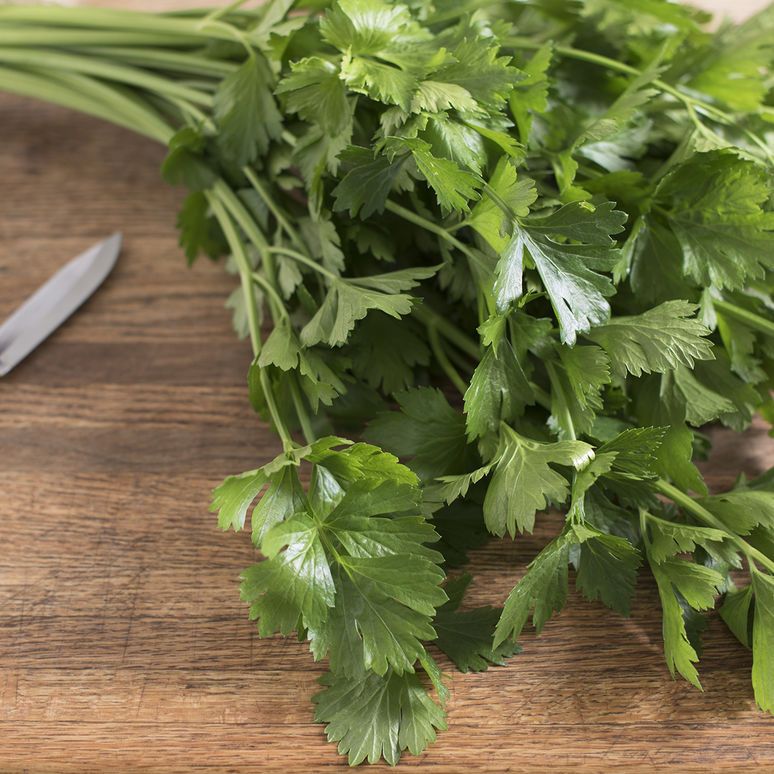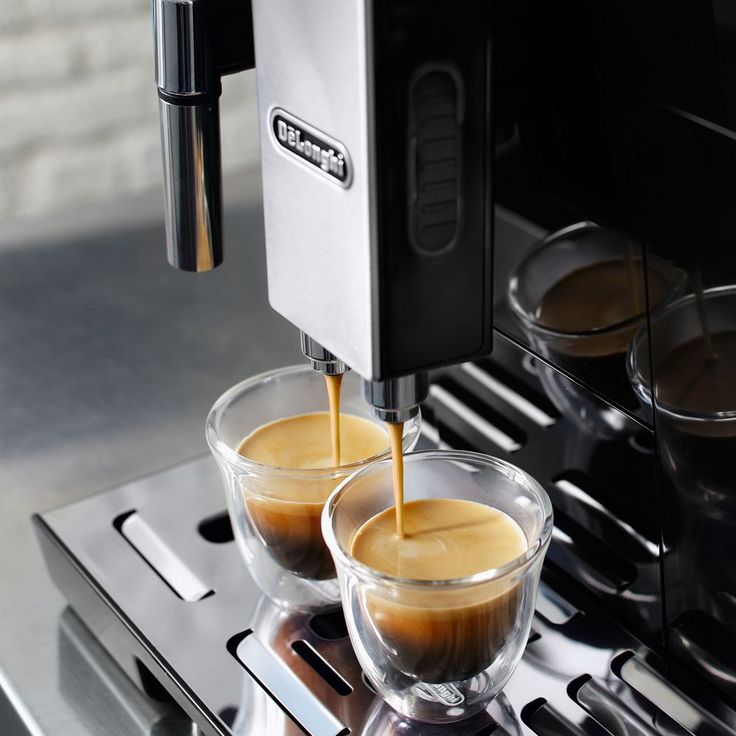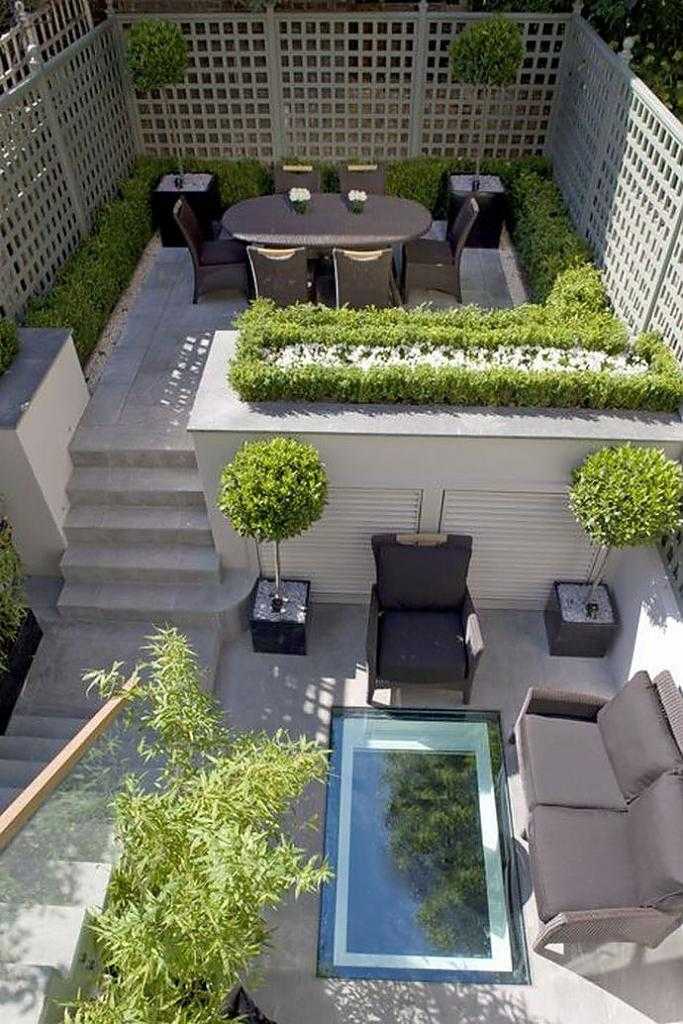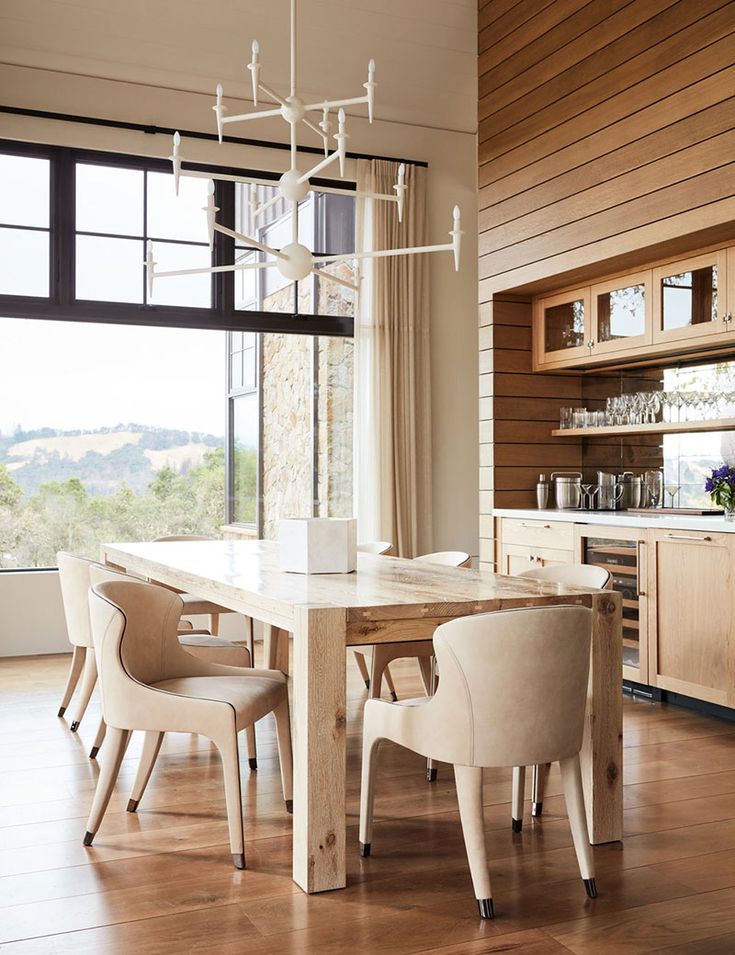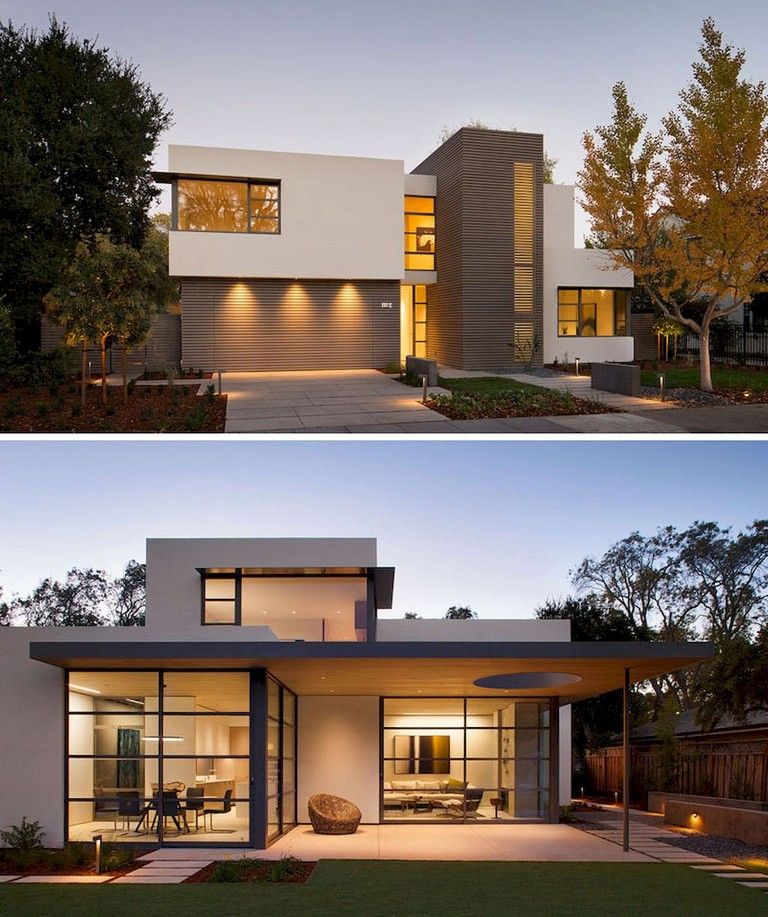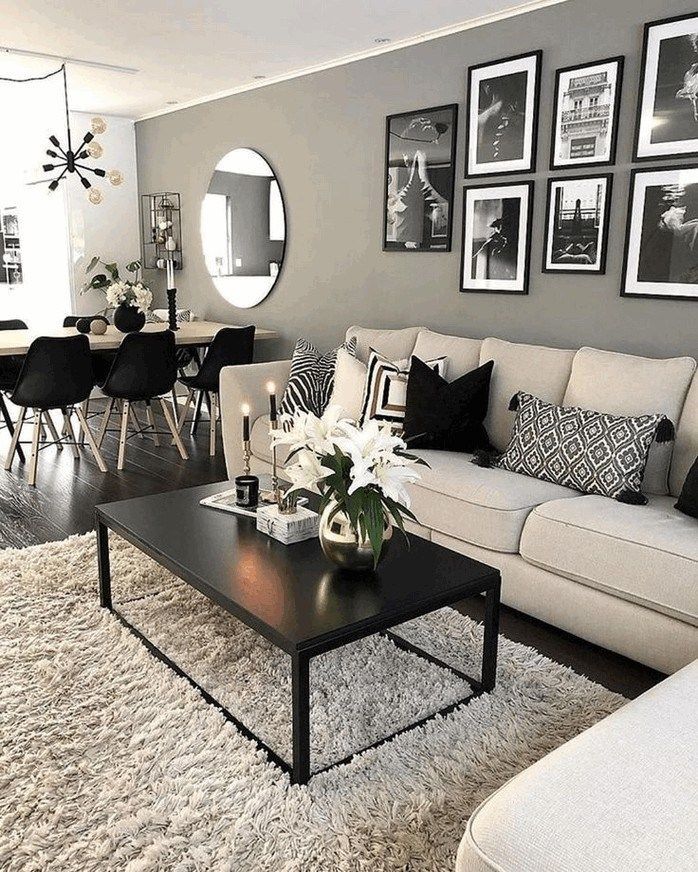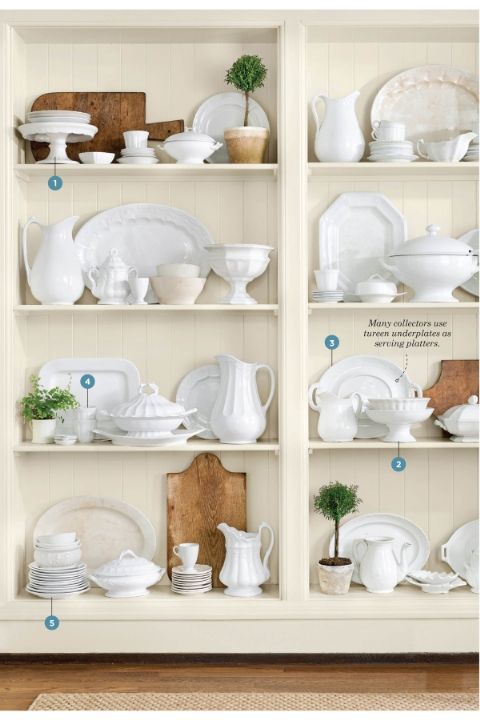Kitchen types and styles
The ultimate guide, from Shaker to slab |
(Image credit: The Expert / Amber Interiors)
There’s a wide range of kitchen styles to consider if you’re remodeling your room.
It’s possible to create a look that’s contemporary, traditional, transitional, farmhouse-style and more, and choosing between different cabinetry styles is crucial to getting the desired aesthetic.
Cabinets are a major feature of the kitchen, and well-made versions will be part of your home for a very long time.
They can be a major investment, too, so it’s vital to consider kitchen cabinet ideas and styles that you’ll love now as well as for many years to come.
Kitchen styles
This guide will show you the different effects a variety of kitchen ideas and styles can have and will help you choose the right cabinetry to suit your needs and achieve your desired look.
1. Shaker style kitchens
(Image credit: Harvey Jones)
Although their design may date from the 18th century, Shaker cabinets have enduring style and are perfect if you're looking for country kitchen ideas.
The doors have a five piece construction with a flat inset panel framed with rails above and below, and stiles on either side that gives them interest and detail but swerves fussiness.
The Shakers emigrated from the UK to the US in 1774 in order to establish their utopian community, and the doors embody the sect’s principles of honesty, utility and simplicity. The door design involves no waste of material, yet they are both sturdy and practical.
The result is a cabinet that creates an impression that’s neither traditional nor contemporary, but is handsome and timeless.
Cherry and maple were often used to make Shaker furniture, so choosing these woods, or oak today, creates a more classic appearance.
But Shaker-style painted kitchen cabinets are now favored choices, too, offering the opportunity to reflect the light for a larger feeling kitchen if pale colors are selected, or to make a statement in dark hues.
2. Modern style kitchens
(Image credit: McCarron & Co)
There are a range of modern kitchen ideas to choose from, including cabinetry that comes in a wide variety of materials and finishes.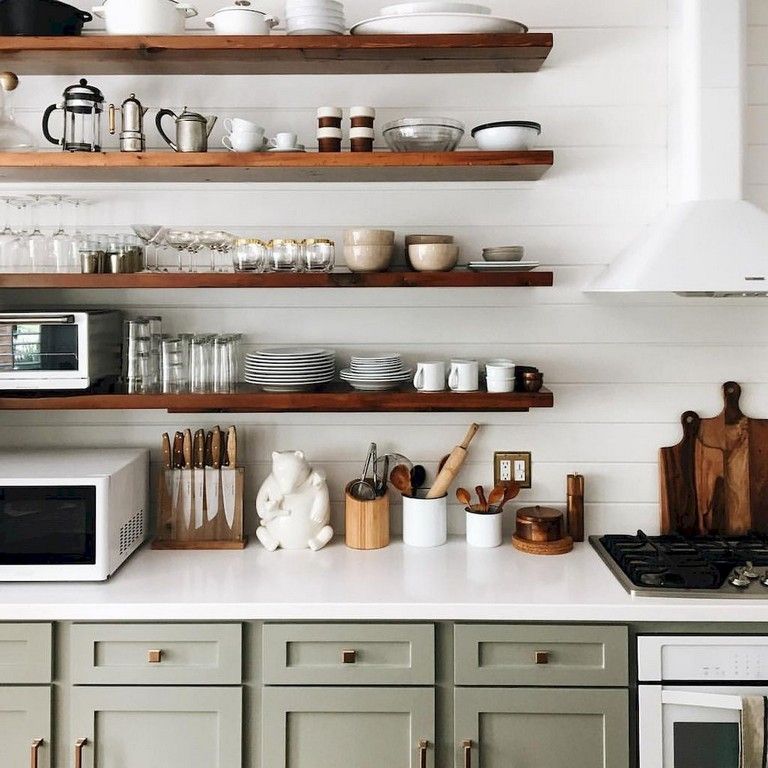
For base and wall-hung cabinets and cabinetry to go with your kitchen island ideas, think two or more colors.
When thinking about which kitchen cabinet colors and shades you might want, grays are still a huge hit for modern spaces, as are warm neutrals. White is perennially desirable for its space-stretching quality.
But moody darks that create a cozy atmosphere are on trend, too, including rich blues and greens and statement black. And think color pops as well for selected cabinetry in a modern kitchen.
Cabinets are no longer finished in a single material either: wood cabinet doors may be teamed with a manmade finish, metallics can add highlights, and smooth cabinet doors may contrast with tactile textural versions.
Often cabinets are flat fronted (see below), but while handleless is a popular choice, so too are inset handles that add subtle detail to the scheme.
3. Slab door kitchens
(Image credit: Future/Jonathan Gooch)
Opt for slab kitchen cabinets and in place of the panel design seen in Shaker and traditional styles, the door is flat, creating a look that’s sleek, streamlined and unmistakably contemporary.
It’s distinguished from the modern kitchen style that combines colors and finishes (see above) by the fact that it generally features a single hue.
The finish might be high gloss in a vibrant color, or even a combination of the two for a high impact scheme. Although, painted finishes in more understated whites and neutrals along with darks are possibilities.
There’s an alternative if this Euro style look isn’t to your taste but the sleek slab door is the clean aesthetic you prefer. Woods like cherry and maple can give this style a warmer finish, whether the door is solid wood or veneered.
4. Farmhouse style kitchens
(Image credit: Our Food Stories/deVOL)
The farmhouse style that is, for many, synonymous with Fixer Upper Joanna Gaines, is a modern rustic look.
Often featuring shiplap walls, apron-front sinks and open shelving filled with rustic objects, the farmhouse kitchen idea above combines modern appliances with traditional features in a welcoming, relaxed but functional way.
When it comes to cabinetry, think traditional raised panel designs rather than flat doors and painted finishes, such as clean white, warm neutrals and nature-inspired greens.
Alternatively, pick cabinetry in woods such as oak, maple, cherry and walnut that offer pleasing grain and appealing natural color.
5. Cottage style kitchens
(Image credit: British Standard)
Whether in locations beside the sea or a lake, or inland, cottage kitchen ideas feature quirky, compact and rustic details.
Original features are lovingly restored, while state-of-the-art appliances are frequently concealed - or at least discreet.
Often a space with industrial or nautical kitchen lighting ideas, traditional metals for faucets and cabinet hardware, they’re also home to treasured finds and collectibles.
As for cabinetry styles for cottage kitchens, traditional is the route to take. Look for raised panels with decorative detail or try the verticals created by beadboard designs (also known as tongue and groove), or more intricate open grate doors.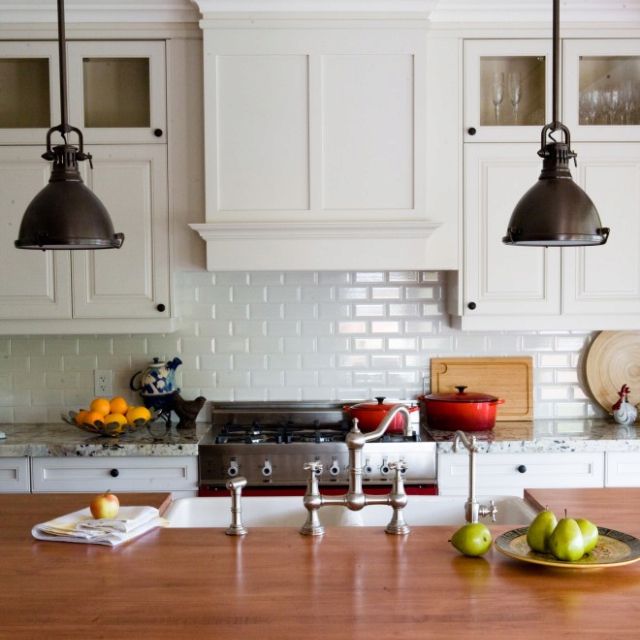 As well as fitted cabinetry, consider freestanding furniture for displaying china and more.
As well as fitted cabinetry, consider freestanding furniture for displaying china and more.
As for cabinet finishes, distressed paintwork gives a cottage kitchen a lived-in style and complements industrial accessories. Or opt for simple painted finishes in pure or off-white to brighten compact rooms where daylight can be limited by small cottage windows.
6. Traditional style kitchens
(Image credit: Future/Mark Bolton)
Kitchens with traditional style don’t stint on embellishments. While they’re as practical and functional as contemporary kitchens, they’re all about the detail.
Cabinets that complement traditional kitchen ideas frequently feature raised panel doors. These might be scalloped or beveled, have detailed profiling or mitered corners, for example.
Decorative crown molding on wall and floor-to-ceiling cabinetry draws the eye upwards and adds to the grandeur of the space, while toe kicks make the cabinets appear to be freestanding and furniture-like.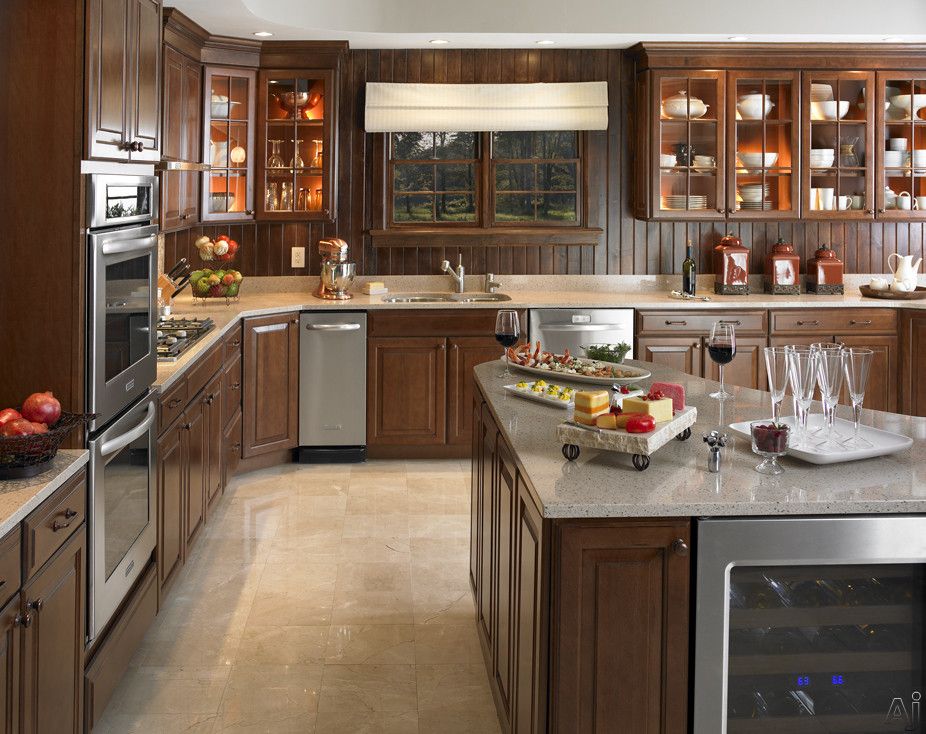
As well as solid kitchen cabinetry doors, traditional kitchens often feature glazed cabinets, too, that are perfect for display.
Island cabinetry, meanwhile, might have corbels or pilasters together with wainscoting that turns these kitchen features into substantial centerpieces.
Cabinets are often painted in whites and other pale shades, but the trend for incorporating different finishes has hit these kitchens, too. They might feature islands or other cabinetry in mid or richly toned woods, a dramatic dark or a brighter paint hue alongside another finish.
7. Transitional kitchens
(Image credit: Future/Brent Darby)
Transitional kitchens remain one of the top two most popular kitchen styles in the US along with contemporary, according to the NKBA (National Kitchen & Bath Association).
Blending contemporary and traditional aesthetics, transitional kitchens are elegant and classic.
If you're wondering which kitchen cabinetry is best for a transitional kitchen, Shaker cabinets or similar designs with inset panels but clean lines overall are the top option, introducing detail that’s nevertheless subtle to these rooms.
Transitional kitchen cabinets are often painted wood, and white is a favorite finish, along with other pale neutrals like beige and gray. But neutrals aren’t a prerequisite for this cabinetry style and blue is growing in appeal.
As with other styles, a two color scheme with a neutral base and wall cabinets teamed with a kitchen island in a different hue is on trend.
The alternative choice for cabinets in a transitional kitchen is to go for a wood finish that shows off the grain of the chosen timber.
Sarah is a freelance journalist and editor. Previously executive editor of Ideal Home, she’s specialized in interiors, property and gardens for over 20 years, and covers interior design, house design, gardens, and cleaning and organizing a home for H&G. She’s written for websites, including Houzz, Channel 4’s flagship website, 4Homes, and Future’s T3; national newspapers, including The Guardian; and magazines including Future’s Country Homes & Interiors, Homebuilding & Renovating, Period Living, and Style at Home, as well as House Beautiful, Good Homes, Grand Designs, Homes & Antiques, LandLove and The English Home among others. It’s no big surprise that she likes to put what she writes about into practice, and is a serial house renovator.
It’s no big surprise that she likes to put what she writes about into practice, and is a serial house renovator.
16 Different Types of Kitchen Styles
5.8K shares
- Facebook109
A big kitchen design decision is which kitchen style to choose.
Sometimes it’s an easy decision, especially if you have an overall style for your home, whether new or existing. In other instances, it’s a difficult decision. We hope with our kitchen galleries organized by styles that we can help you choose.
It is widely known that the kitchen is the heart of any home. No longer just hubs for cooking, kitchens are a place where creativity is fostered, family comes together, and memories are made.
Kitchens are utilitarian, functional, and deeply personal, in addition to being the locale in which nourishment is created, and food is served to our beloved family members.
Read on below to learn about some of the most popular and sought-after kitchen styles that are defining the look and feel of homes across the country today.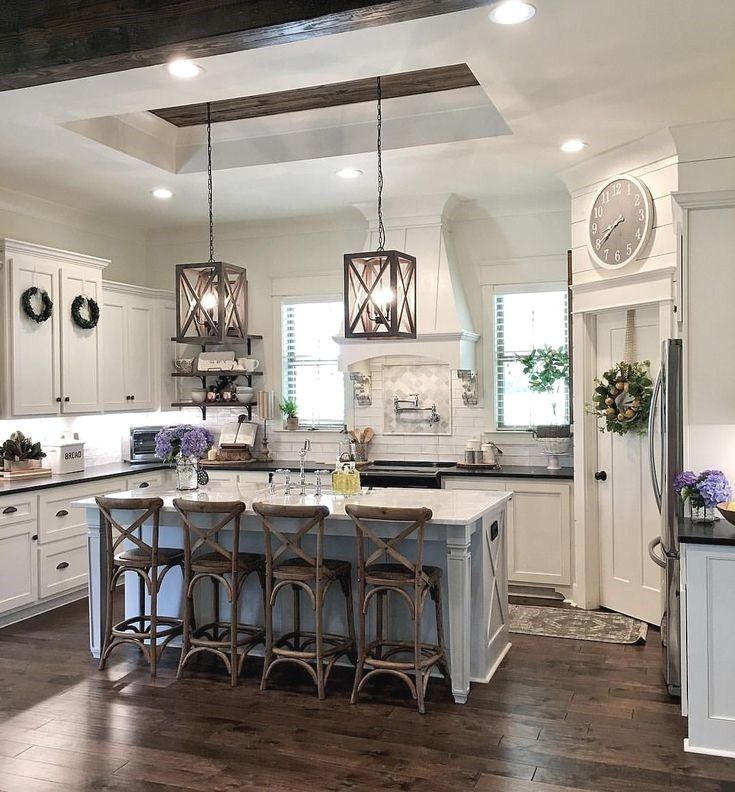
Related: Average Kitchen Size | Minimalist Kitchen Ideas | Long Narrow Kitchen Ideas | Kitchen With Columns | Kitchen Layout Ideas | Tricks to Make Your Kitchen Look Luxurious
Most Popular Kitchen Styles
Our kitchen styles analysis is based off analyzing the assigned styles of 1,675,494 kitchens.
Kitchen style is often partly dictated by house style, but not always, especially when one is doing a major reno and multiple styles are available.
These days, styles are fluid and a big reason “traditional” is the most popular is a lot of kitchens are classified as traditional if they incorporate more than one style. Same thing with contemporary… the two are broad kitchen style categories.
Overview
Chart
Types of Kitchen Styles1. Traditional
Traditional kitchen. Source: Trulia
Hallmark design elements:
- Elegant and timeless aesthetic
- Modern American look and feel
- Clean, comforting, inviting
- Traditional + contemporary elements
Defined by its clean, comforting, and inviting aesthetic, a traditional kitchen makes use of classic design elements and an abundance of fresh colors to create a look that is elegantly timeless.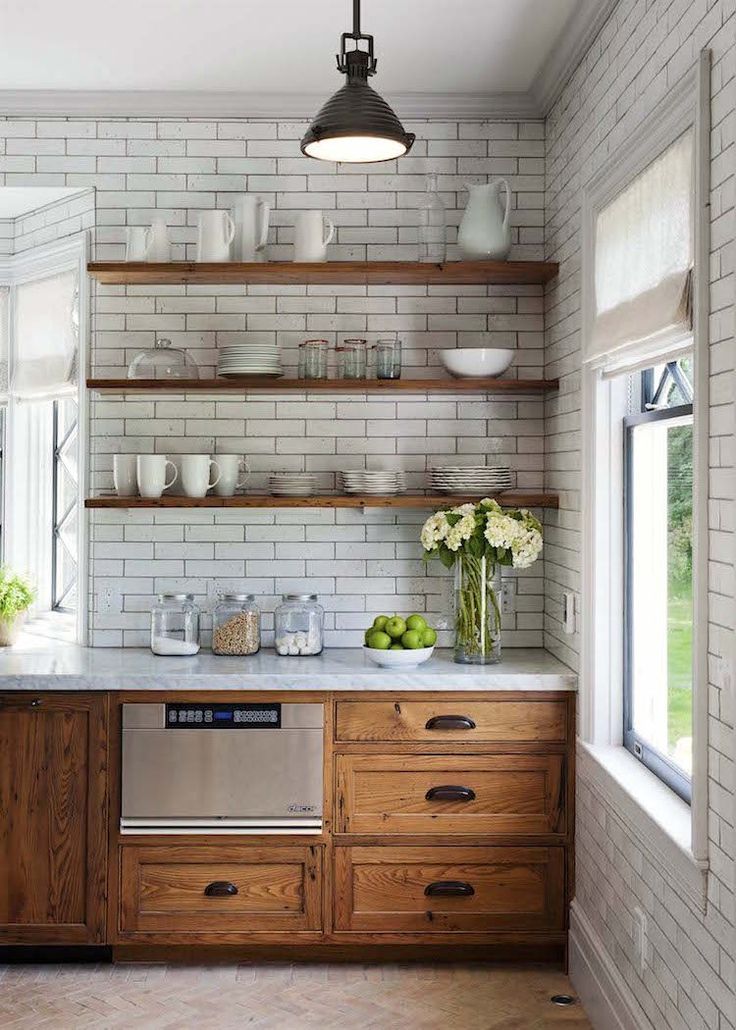
White tiles, paint, and accenting are commonly used in traditional kitchens for a crisp and clean contrast that provides visual appeal and a sparkling vitality.
In keeping with the timeless appeal, detailing like paneled or glass cupboard doors are often utilized, along with personally requisite details such as coordinating backsplashes, polished hardwood floors, modern stainless steel appliances, and gleaming marble countertops.
While traditional kitchens exhibit a casually nuanced overall feel and elegant look, the details can vary immensely.
Very often, the visually appealing and perfectly complementary color duo of crisp white and dark brown woods are employed. Smatterings of stainless steel and polished accents, vintage or period accents like handcrafted drawer pulls, or tailored upholstered seats can help to highly distinguish one traditional kitchen from the next.
2. Contemporary
Hallmark style elements:
- Modern and minimalist components
- Artistic elements
- Straight and horizontal lines
- Uniquely bold simplicity
See our modern kitchen ideas here.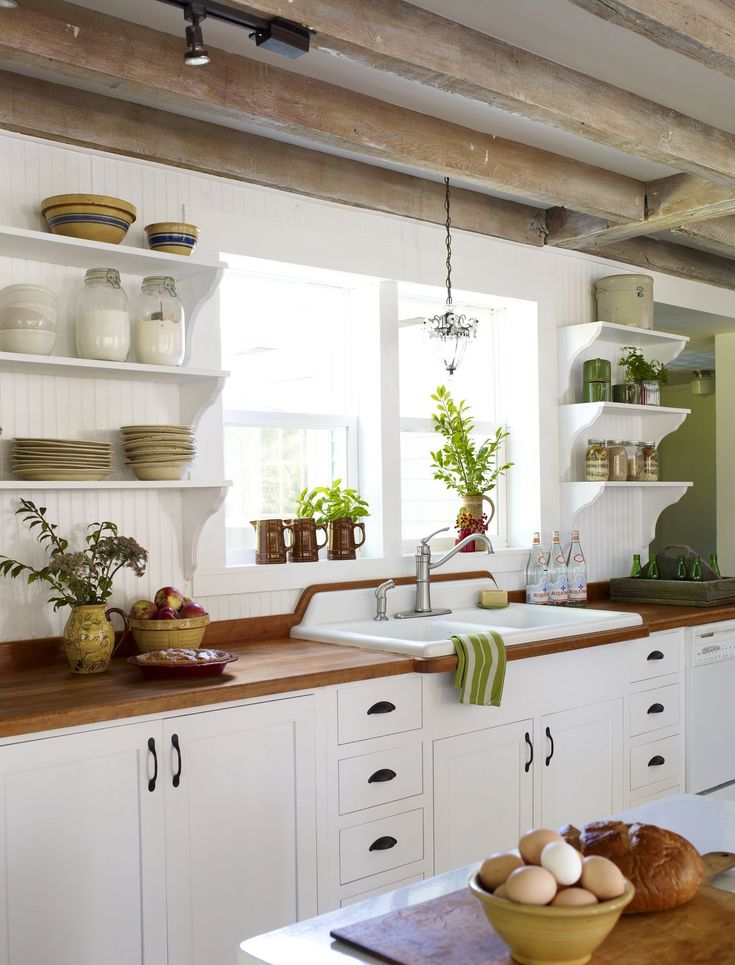
The contemporary style kitchen is a highly popular design concept that has been readily embraced by homeowners en masse. A kitchen styled in a contemporary fashion incorporates a mixture of new and old and casual yet polished elements to give a sleek aesthetic.
While traditional kitchens employ the use of classic design elements punctuated by sometimes ornate and vintage detailing for a more conventional and familiar appeal, a contemporary kitchen differs from its typically more artistic and minimalist approach. Contemporary kitchens are typically unadorned and free of excess detailing. Rather, the focus tends to be on artistic juxtaposition and the complementary relationship between materials, surfaces, and colors.
Modern trends for contemporary kitchens feature a lack of symmetry and aim for a more geometric look. Horizontal lines create a straightforward, user-friendly appeal. Unexpected details like concrete flooring, brushed silver knobs, strategically and artfully placed chrome and lacquer detailing, and tiny pops of color offer an industrial vibe softened by visual appeal.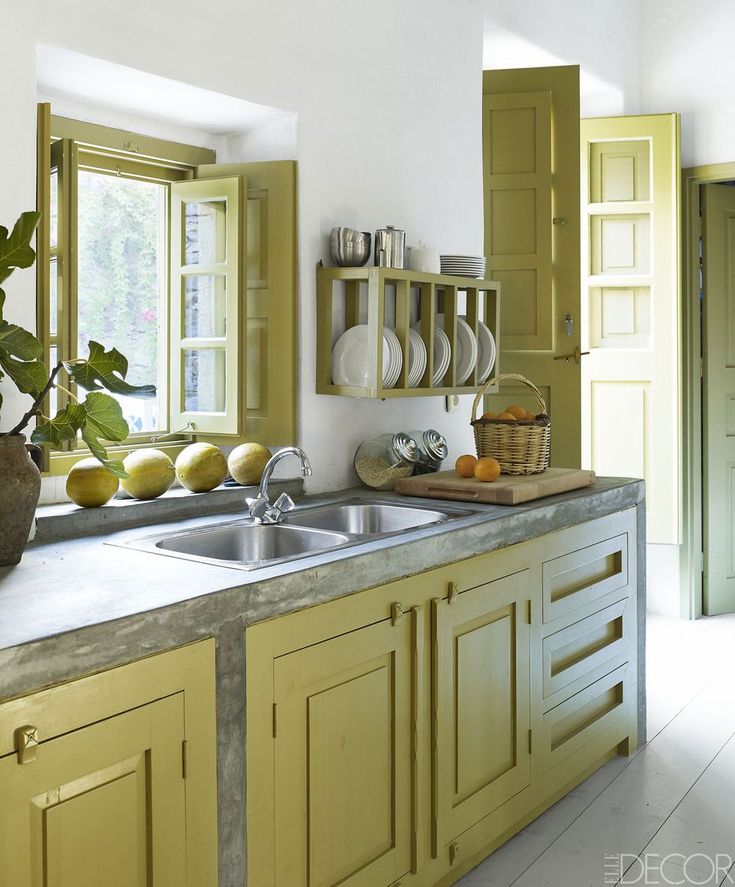
When decorating a contemporary kitchen, the sky is truly the limit. There is no standard blueprint for a contemporary-styled kitchen; rather, the design is defined by minimalist decorating, a clean aesthetic, strong and bold color choices, and an emphasis on embracing the unexpected.
A contemporary kitchen can be truly inviting in the most unique ways. The styling mimics a Zen environment, free of clutter, adornment, and visual chaos. As such, the beauty in the materials chosen is given an opportunity to be visually distinct.
Polished granite countertops, for example, gleam in their unadorned expansiveness. Singularly punctuated by a bright and cheery bowl of fresh fruit or another simple vividly colored design choice, the countertop is presented in all of its simplicity, beauty, and splendor. In essence, a contemporary kitchen allows the materials from which it is constructed to stand out and shine while offering inviting physical and visual sensations that create a sense of calm, tranquility, and peace.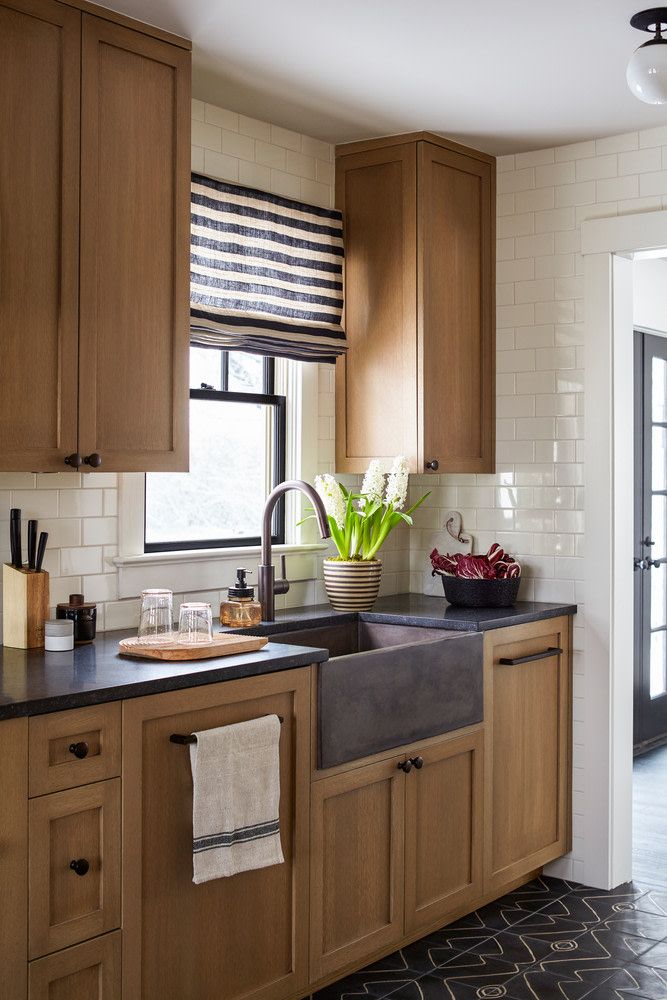
3. Transitional
Transitional kitchen style.
Hallmark Transitional Style Elements:
- Traditional and contemporary design elements
- Clean and simple minimalism
- Inviting and engaging traditional style
- Best of both worlds versatility
Visit our transitional kitchen gallery
Transitional style kitchens encompass the best of both worlds by bringing together traditional and contemporary design concepts. The juxtaposition between traditional style and contemporary design is at the heart of the transitional style kitchen. Offering all the inviting comfort of a traditional kitchen space, transitional kitchens simultaneously show off the beautifully clean and simple minimalist design elements found in contemporary kitchen styles. While elements from both styles are apparent in transitional décor, sometimes elements from other styles are utilized as well.
Despite not having a strict definition in terms of what can and cannot be used in a transitional kitchen, it is generally agreed that the transitional style is a delicate balancing act in proportions, materials, and harmony.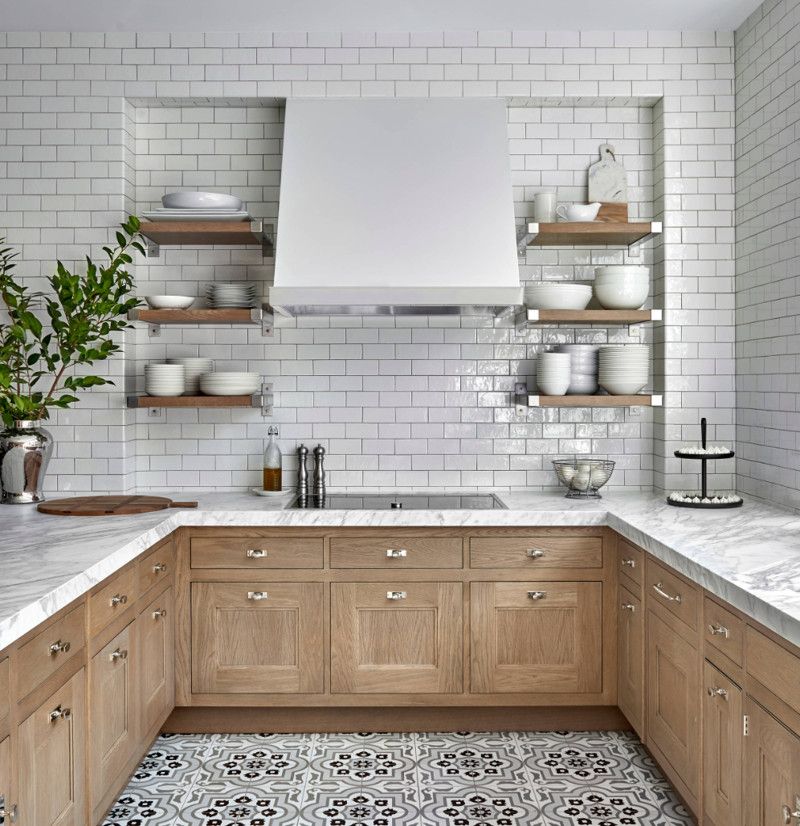
4. Beach
Hallmark style elements:
- Beachy and coastal vibe
- Cool shades of blue; crisp white hues
- Wicker, Seagrass, and sand
- Airy; copious amounts of sunlight
Beach style kitchens offer a beachy and coastal feel right within the comforts of your own home. Cool shades of blue are paired with thematically appropriate accents like seagrass, wicker, and sand to create a vacation-themed setting that is relaxing, inspiring and fun.
Airily sheer window treatments atop large glass windows are common accoutrements that give kitchen dwellers plenty of warm sunlight to bask in and enjoy. Coastal themed flooring in lighter colors and unique finishes can be used to add to the beachy feeling of the kitchen, in addition to freshly whitewashed paint treatments to offer a casual yet elegant resort-like vibe. Beach style kitchens are a great way to engage in thematic inspiration! Use seashells, sea glass, and ocean related paraphernalia to create a calm and cool beach environment that makes you feel as if you are on vacation every day within your own kitchen.
5. Eclectic
Eclectic style kitchen.
Hallmark style elements:
- Multifaceted approach
- Highly personalized and curated
- Visually stimulating
- Rich colors and textures
The eclectic kitchen is an ultimate study in mixtures, contrasts, composition, and scale. Bold paint choices, intricate odds and ends, a personally curated collection of trinkets, and various textural elements are commonly incorporated within eclectic kitchens.
The eclecticism of the design concept is more a reflection of an individual’s multifaceted tastes, preferences, and personality, rather than a nonsensical mishmash of unrelated items.
Done correctly, the eclectically designed kitchen reflects a cool and easy confidence. Perfectly mismatched accoutrements and worldly adornments are tied together with centrally placed pops of color that provide a sense of consistency and thematic order. The end result is a highly-personalized kitchen with an effortless appeal, filled with rich color and texture that is both uniquely inviting and visually stimulating.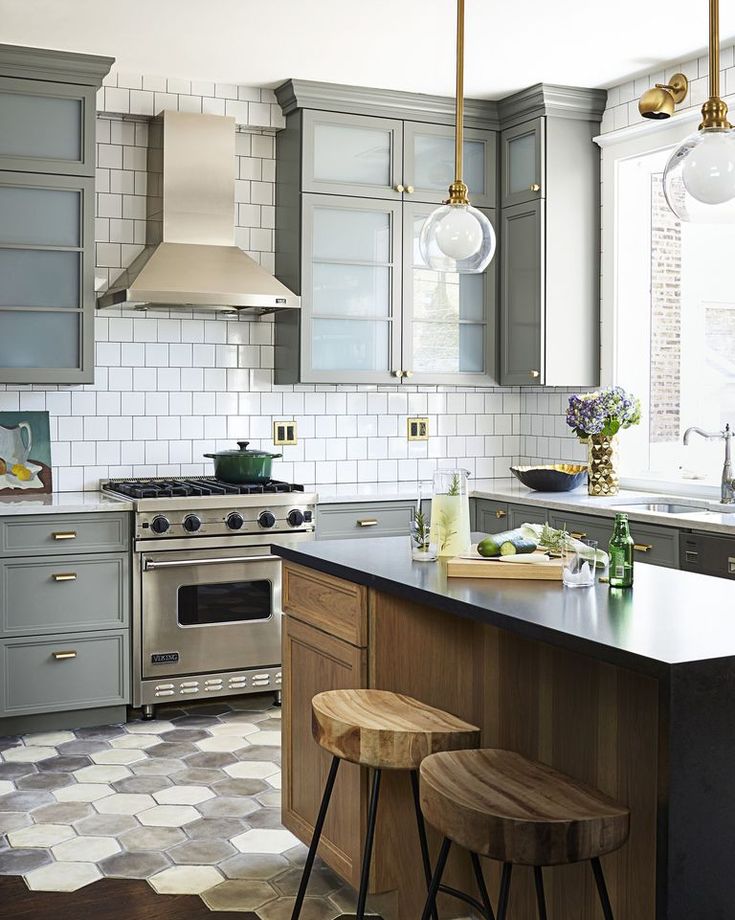
6. Modern
Modern kitchen style. Designed by: Falken Reynolds Interiors
Hallmark style elements:
- Sleekly sophisticated
- Exotic and high-end materials
- Clean lines and timeless silhouettes
- Minimalist styling
Visit our modern kitchen gallery here.
Much like contemporary kitchen styles, a modern style kitchen embodies sleek sophistication and sexy appeal. Similar to contemporary styling, clutter, accoutrement, and adornment are kept to a bare minimum. Beautiful, bare expanses of polished countertop are accented with pops of color to emphasize high-quality materials and artistry. The lack of countertop decorating lets kitchen dwellers take in the full beauty and quality of the pieces that define and comprise the kitchen’s base aesthetic.
High-quality materials are in fact hallmarks of modern kitchens and typically include exotic materials which are luxurious to the touch and sight. Luxury is pervasive throughout the modern kitchen; classic and modern pieces are consistent with high quality and typically of simple construction with clean lines and timeless silhouettes for an enduring elegance and upscale feel.
7. Craftsman
Craftsman style kitchen
Hallmark style elements:
- Artisan Flair
- Natural materials
- Rustically appealing look and feel
- Fine craftsmanship
There is an organic and earthy sensuality about a Craftsman styled kitchen that is unique, inviting, and comforting at once.
The Craftsman style was popularized by the early 20th century Arts and Crafts movement during the industrial revolution. It was during this time that home design and architecture, in general, became very artisanal in nature. Kitchen furniture, tabletops, and cabinets were hand built, constructed with the utmost of care, and designed to last a lifetime.
An abundance of natural materials, primarily in the form of natural woods in various hues of brown, are the cornerstone of every Craftsman style kitchen.
Typical accents almost always include solidly built and expertly crafted cabinetry and counter tops. Often, intricate woodwork and stonework are incorporated throughout the kitchen to give an overall artisan feel to the environment.
Craftsman style kitchens are rustic and inviting in a warm and down-to-earth kind of way. The setting is suggestive of another time and place when life was simpler, and the kitchen a haven to cook and create hot and nourishing meals for friends and family alike.
8. Farmhouse
Hallmark style elements:
- Intimate and cozy environment
- Highly decorative
- Brimming with details
- Natural and premium materials
Farmhouse style kitchens are designed with country-style flair and thematic farmhouse elements. The overall look and feel of a farmhouse style kitchen can range from natural and organically rustic to a more contemporary style.
A very popular design concept, farmhouse style kitchens offer a distinctly intimate cozy look and feel. Decorative adornments are highly utilized; woven baskets and delicate china sets are often proudly put on display.
Unlike minimalist or modern kitchens, the farmhouse kitchen is brimming with personal details.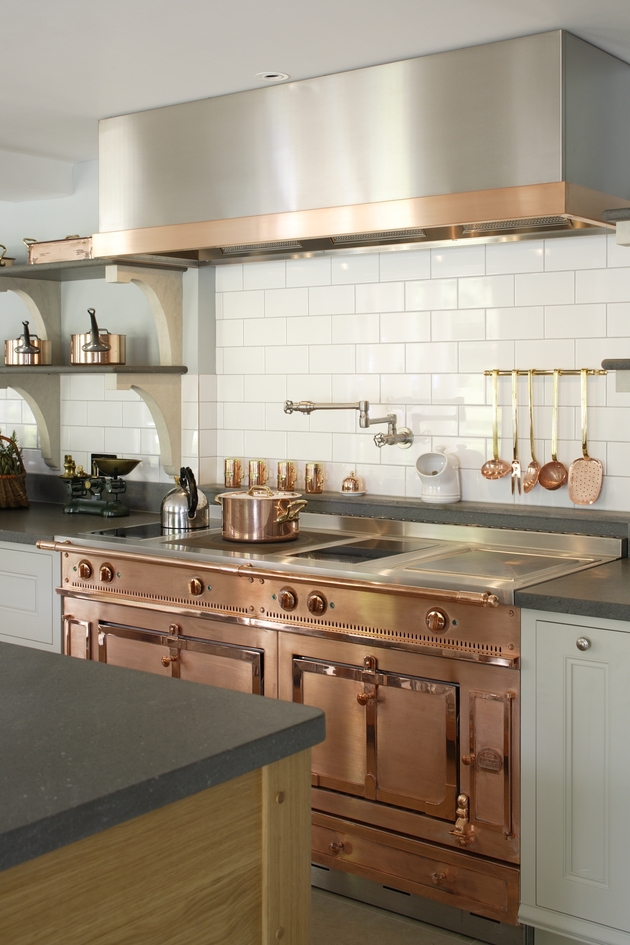 Common design notes include things like vintage door knobs and pulls, hand painted dishes and other very individual character details.
Common design notes include things like vintage door knobs and pulls, hand painted dishes and other very individual character details.
From the ceiling to the flooring, expect a farmhouse style kitchen to be a study in visual appeal. Exposed wooden beams, unexpected brick accents, and vivid pops of radiant color are all fantastic components in this kind of kitchen style, along with fresh flowers, baskets of fruit, and country style knickknacks.
There is an undeniable emphasis on natural woods, which may or may not be mixed in texture and tone, along with the judicious use of copper pots and accents, woven basketry and other items, glassware and vases, farm-style seating and sturdily built wooden countertops that offer functionality and beauty all at once.
9. Rustic
Hallmark Style Elements:
- A multifaceted approach to decorating
- An abundance of wood and stone
- Eclectic styling with a nod to nature
- Comfortable and earthy appeal
Rustic styled kitchens are versatile in their multifaceted appeal and approach.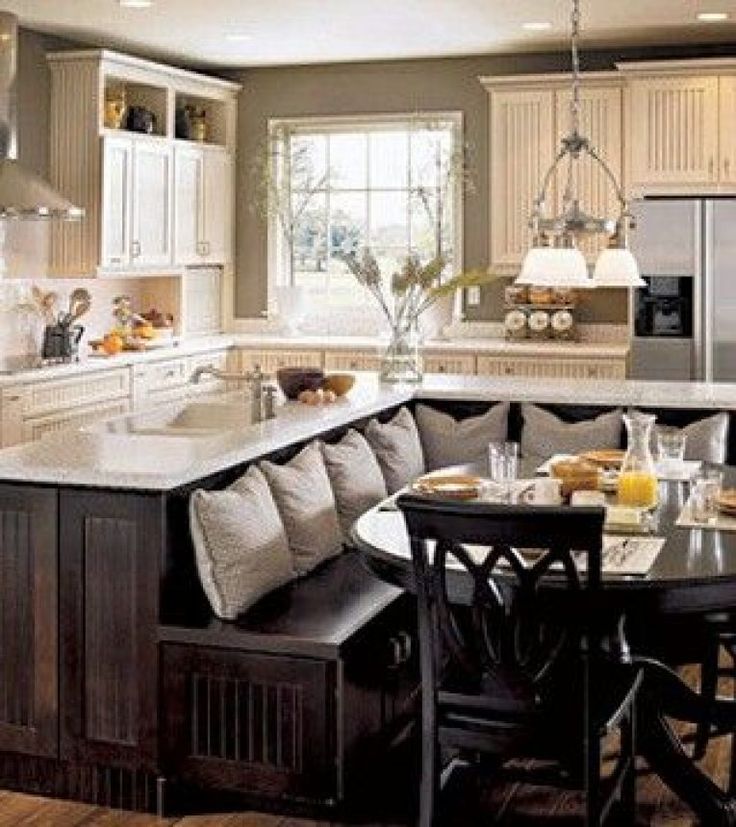 Eclectic in nature, this style of decoration has limitless options for decorators and homeowners alike.
Eclectic in nature, this style of decoration has limitless options for decorators and homeowners alike.
A rustic kitchen features an abundance of wood and stone with commonly used design components such as handwoven tapestries, distressed finishes, unfinished surfaces, and textured pieces featuring natural fibers.
Similar in concept to Craftsman and farmhouse kitchens, rustic kitchen spaces differ in that they encompass an eclectic approach while maintaining a nod to its nature-oriented roots. Reminiscent of log cabin interiors, a rustic style kitchen evokes themes of simplicity, practicality, and nature.
10. Mediterranean
Hallmark style elements:
- Classical Grecian style notes
- Intricate and high-quality details
- Old-world opulence
- Bold colors paired with earthy neutrals
Visit our Mediterranean kitchen gallery
Mediterranean style kitchens have classically Grecian styling notes that are reminiscent of the art, culture and geographical beauty of this ancient locale.
Purposefully designed to invoke the beauty and complexity of Greek design, Mediterranean style kitchens incorporate bold colors, earth tones, glazing techniques, and fantastically unique textured walls that harken to a more primitive time and place in the world.
Visual interest is of paramount importance in a Mediterranean style kitchen; often you will find décor featuring terra cotta accents, intricate tile mosaics, gorgeously unique backsplashes, and furniture constructed from the finest quality hardwoods. It is important to note that the tile mosaics and textured walls are almost always defining parts of a Mediterranean style kitchen.
Unlike the simpler aesthetics of a modern or contemporary kitchen, the Mediterranean style kitchen features a plenitude of curves, creativity, and a distinct old-world opulence.
11. Asian
Hallmark style elements:
- Natural materials
- Efficient use of space
- Subtle use of decorative touches
- Incorporates curves.
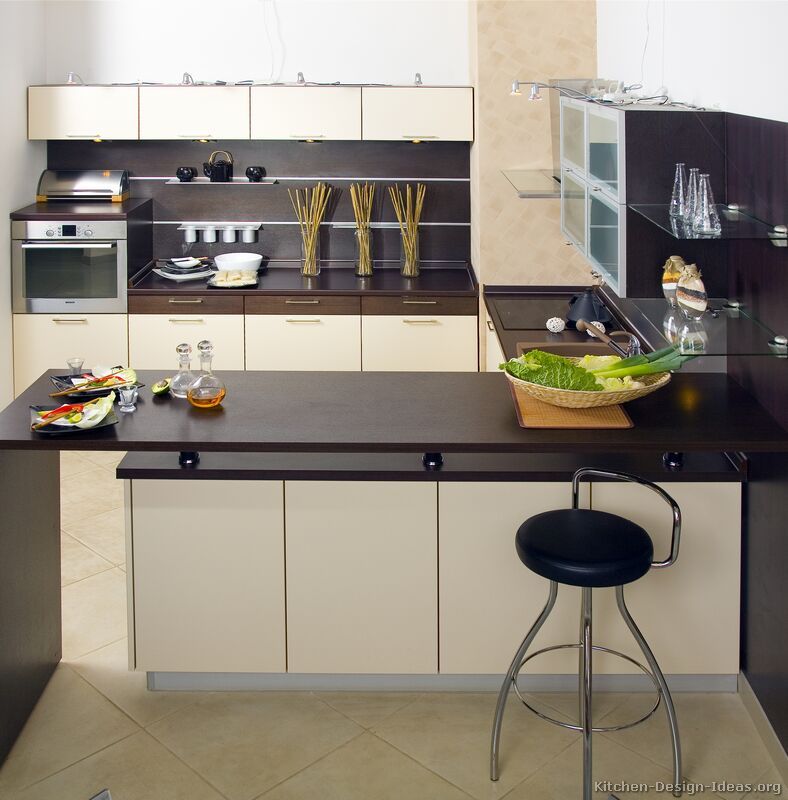
Visit our Asian styles kitchen gallery.
12. Industrial
Hallmark style elements:
- Lots of brick, metals and wood
- Open concept
- Darker lighting
- Common in loft condos and apartments (although more detached homeowners are opting for the industrial style kitchen).
Visit our industrial kitchen styles gallery
13. Scandinavian
Hallmark style elements:
- Light and bright (plenty of light wood)
- Straight lines
- Minimalist (uncluttered)
- Mid-century meets modern
Visit our Scandinavian kitchen styles gallery.
14. Mid-Century Modern
Hallmark style elements:
- White with splashes of color
- Uncluttered
- Straight lines
- A hint of glam (chrome).
Visit our mid-century modern gallery
15. Shabby Chic
Source: Shelterness
Hallmark Style Elements:
- Old decor elements: distressed table, flooring and cabinets
- Circa 1950’s floral patterns
- Old knick-knacks that you’d find in a pawn shop or garage sale
16.
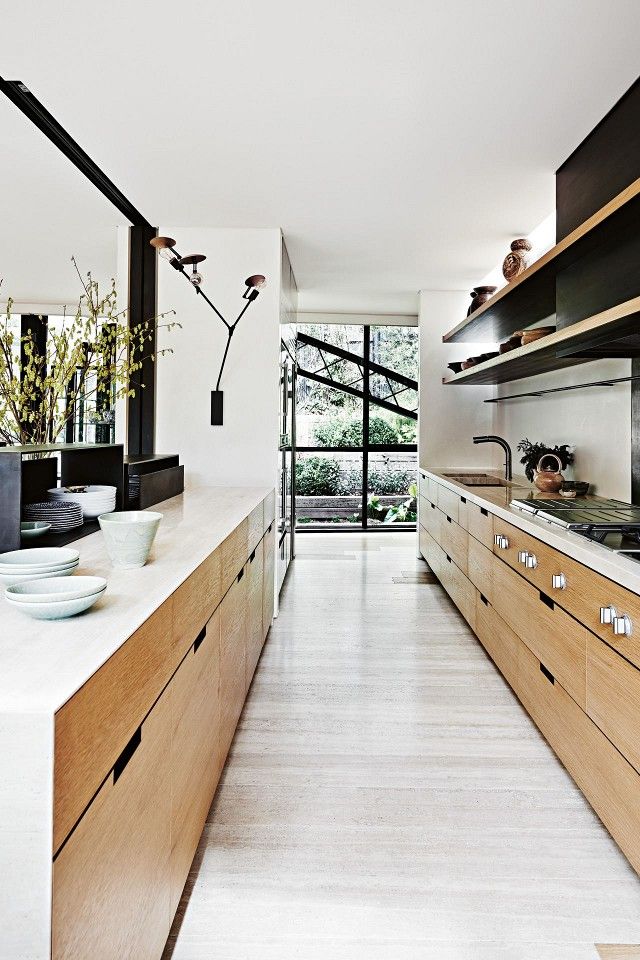 Southwestern
SouthwesternHallmark style elements:
- Found in adobe houses (and faux adobe) in the Southwestern region of the USA.
- Similar style attributes to the more country Mediterranean style.
- Plenty of tile work – earth tones mainly.
- Brick and wood.
- Arches.
- Cavernous.
Related:
- Kitchen Layouts
- Kitchen Colors
- Our kitchen cost calculator.
5.8K shares
- Facebook109
33 options, 95 photos in the interior
Provence
Style features:
- The interior is filled with elements with the effect of aging.
- Natural materials preferred.
- Light color palette.
- Stone, stucco, tile or wallpaper with a floral pattern is used for decoration.
- In the interior of the kitchen, natural wood or wrought iron furniture is used.
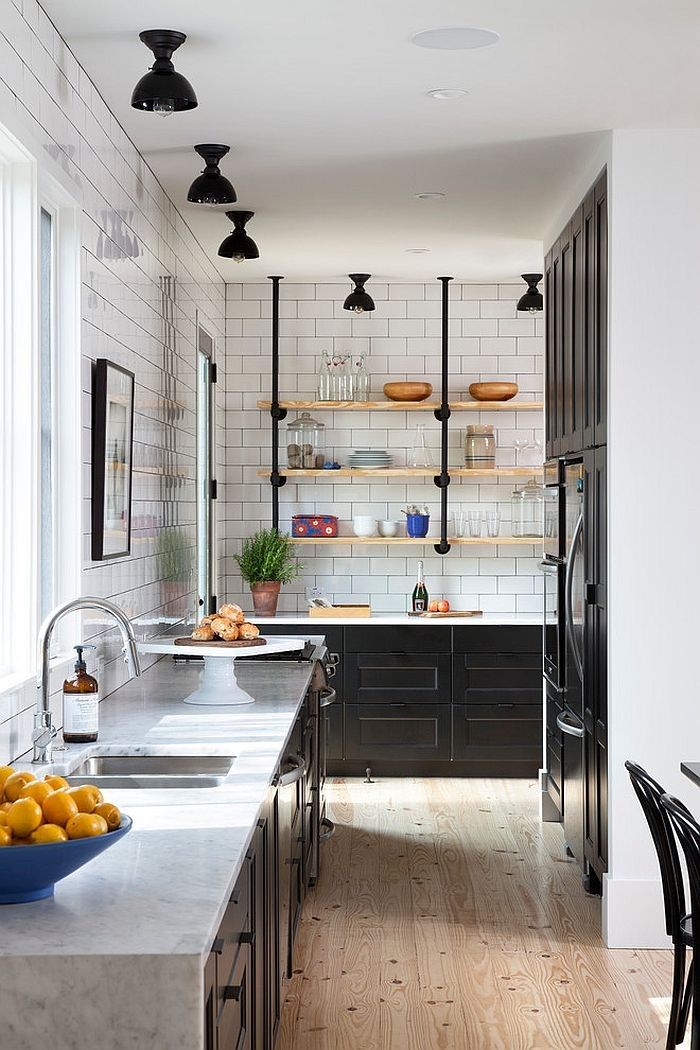
- It is worth using curtains in light shades. Natural fabrics can be plain or with a floral print.
- The interior of the kitchen will be decorated with dishes with a Provence pattern, jugs and pots with herbs.
Pictured is a compact kitchen in sky blue.
Modern style
Distinctive features of the style:
- Style combines clean lines and completely unexpected colors.
- The filling of the interior should be functional, and the use of space should be useful.
- Modern style allows you to combine finishing materials of different colors and textures.
- Strictly shaped furniture is characteristic of modern style, it stands out in color.
- The material of curtains can be varied, but the cut is most often as simple as possible.
- Metallic accessories with an unusual shape fit into the modern kitchen interior.
Pictured is a modern style kitchen. It is based on three colors: white, gray and hot pink.
It is based on three colors: white, gray and hot pink.
Scandinavian style
Distinctive features of the Scandinavian style:
- The style is as comfortable and functional as possible.
- The color palette is monochrome. Light, preferably white shades cover almost all kitchen surfaces.
- The walls are decorated with plaster, bleached wood or wallpaper in light shades. Wallpaper can decorate a simple pattern.
- The furniture is made mainly of wood, has straight lines with maximum use of usable space.
- Textiles made from natural materials.
- Curtains are not often used in the rooms, if desired, Roman or classical curtains.
- The interior of the kitchen will be decorated with cushions for chairs, wooden accessories and potted flowers.
Classic style
The classic style is characterized by:
- Smooth features in the interior and calm light shades.

- For a spacious kitchen, the classic design style is used most often.
- The walls are decorated with noble wood, wallpaper with floral patterns or plain wallpaper for painting.
- The flooring is always wood.
- A stone worktop completes the wooden kitchen.
- Chairs are upholstered in light textiles.
- The color of the furniture is chosen depending on personal preferences.
- Curtains in a variety of cuts with style-specific luxury. Preference is given to noble fabrics.
- Porcelain tableware, useful little things made of wood and flowers look organic in the interior of the kitchen.
Modern classic (neoclassic)
Modern classics are characterized by straight lines, light colors in decoration and noble materials. The walls are perfectly even, covered with plaster, wallpaper or tiles. Lighting should be as much as possible. The neoclassical interior is filled with modern technology.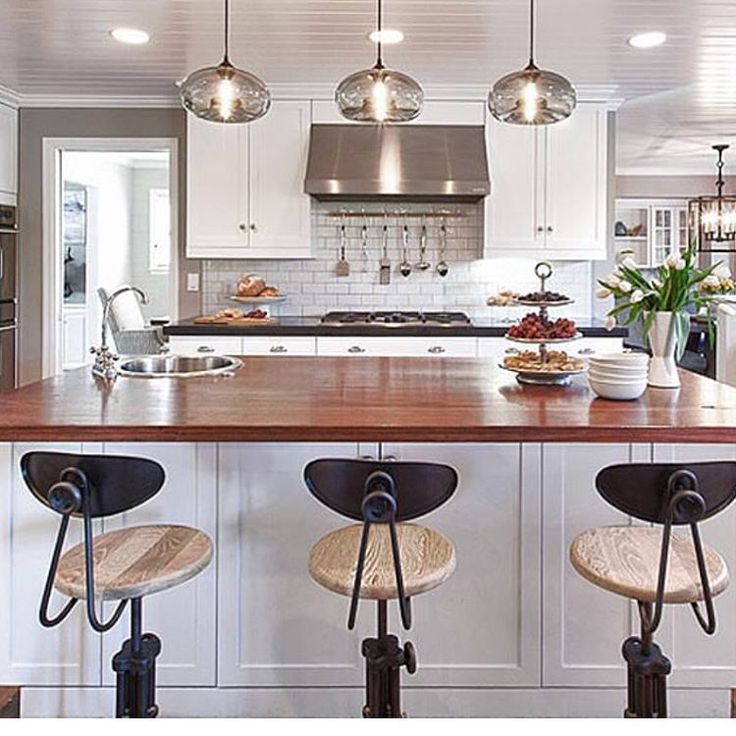
Baroque
The color palette is filled with dark tones. Furniture and decoration is made only from natural materials. The kitchen set is decorated with unusual gold-colored patterns, the chairs are upholstered with fabric.
Rococo
Interior details are not pretentious, colors are in light colors. The furniture is made in pastel shades with the addition of golden details. Rococo is preferably used in spacious kitchens, ceilings can be decorated with complex designs.
Loft style
The main features of the style:
- Spacious rooms with minimal decoration.
- Rough brick walls, cold concrete floors and shelves with complex construction.
- Due to the fact that the loft loves spacious rooms, it is preferable to use it for the kitchen-dining room.
- Finishing is as simple as possible, it is practically non-existent.
- Rough brick or plaster walls work well with cold concrete floors.
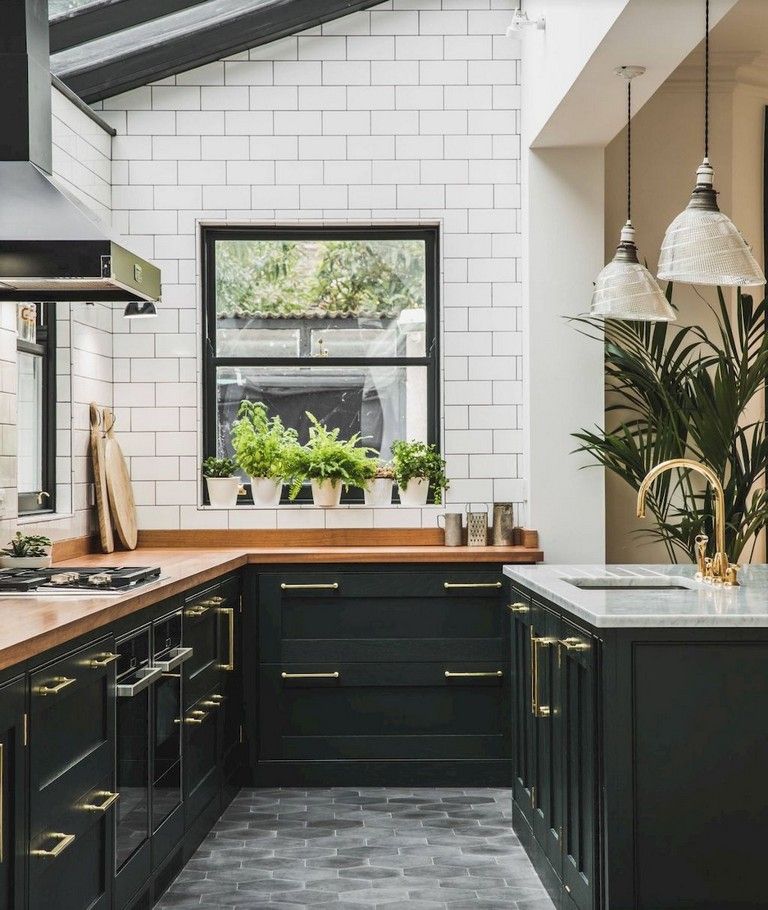
- The design of the room can be completely different due to furniture and accessories.
- In the kitchen, an antique table with chairs will look just as harmonious as a modern minimalist set, the main requirement is the functionality of the items.
- Roman blinds or straight cuts are suitable for decorating the interior of the kitchen. Natural fabrics are used.
- Glass jars, metal utensils as accessories.
Country style
Features:
- The interior is made with the maximum use of natural materials.
- The color palette is filled with warm shades: beige, sand, brown, milky.
- The walls of the kitchen can be decorated with wallpaper with floral patterns, wooden slats or evenly plastered.
- A distinctive feature of the country can be called ceiling beams.
- The furniture is made of wood and has simple shapes.
- The color of the furniture depends on the overall color scheme of the kitchen.
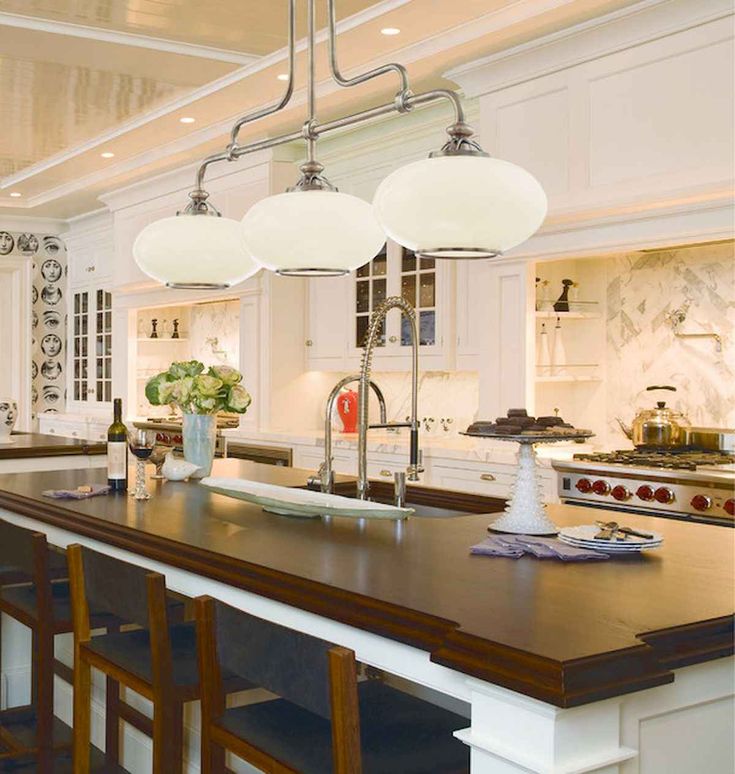
- Curtains are made from natural materials. Straight curtains or Roman blinds made of plain fabric or a light floral pattern will look appropriate.
- Accessories complete the interior of the kitchen. Clay vases, wicker fruit bowls and chair cushions.
Pictured is a rustic kitchen. The main color theme of the kitchen is beige and red.
Chalet style
The interior is preferably done in brown tones. Finishing only from natural materials. The "highlight" of the chalet can be called the noble effect of aging, for example, worn wooden floors. Built-in appliances will help to make the interior designed in one manner.
Rustic
Another destination endowed with rustic charm. The main difference is the underlined brutality. The color palette is any state of wood, from bleached to burnt, stone and dried grass. The kitchen is not crowded with details, the interior is minimalistic and functional.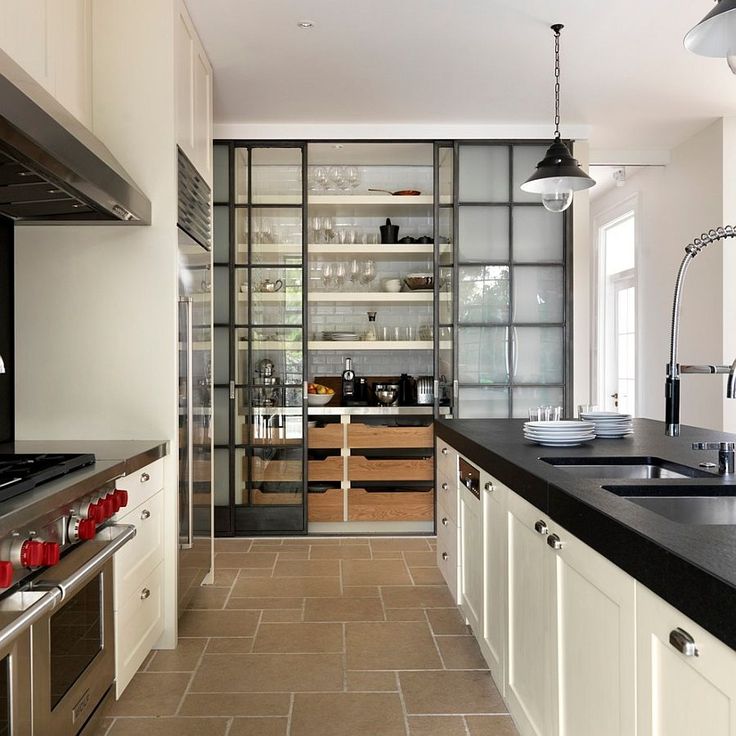
Hi-tech and minimalism
The interior is done in cold shades with maximum use of usable space.
Hi-tech
Features:
- The main color palette is white, black and gray with small splashes of bright colors.
- Hi-tech is distinguished by the use of non-natural material in interior design.
- The walls are made in one color, most often these are cold shades. When using wallpaper, the pattern can be graphic or imitation of natural stone.
- Floor covering with reflective surface. A tile can decorate a small rug with a simple ornament.
- The furniture is predominantly made of steel and plastic with leather upholstery. To decorate the kitchen, a lacquered surface for the headset is used.
- Curtains may be absent, as a hallmark of hi-tech is minimalism.
- If necessary, the kitchen will be decorated with straight curtains of a simple cut.
- Accessories in the kitchen are selected in discreet colors.
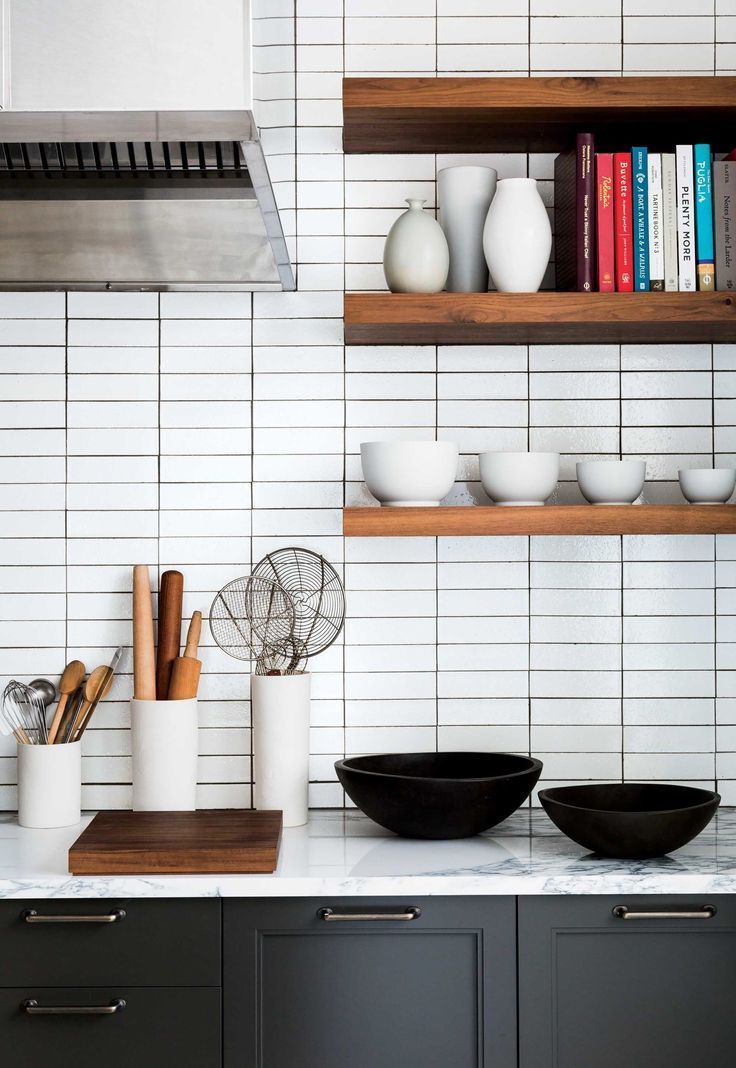 Dishes can be glass or plain, useful little things are preferably chrome or metal.
Dishes can be glass or plain, useful little things are preferably chrome or metal.
Pictured is an ultra-modern kitchen island.
Minimalism
Similar in essence to high-tech styles, but unlike the latter, natural materials and warm shades are used in the interior.
- Functionality remains the main focus. Spacious and bright rooms are welcome. The favorite colors of minimalism can be considered white, gray, black, sometimes beige.
- Finishing is done without the use of patterns and any images.
- The walls are decorated with plaster or plain wallpaper.
- The minimalist style is characterized by the use of furniture of simple shapes. A kitchen set made of natural wood with metal elements will perfectly fit into the overall interior.
- Chairs in wood, chrome or upholstered in fabric.
- With the help of curtains in the kitchen, you can give a little color. Windows will be decorated with curtains of a restrained cut, Roman blinds or blinds.
- Minimalism does not tolerate a wide variety of decorative elements, a pair of glass vases will decorate the kitchen.
The photo shows a minimalist kitchen. The interior uses a minimum of decor, a maximum of light and space.
Modern
The style is divided into two currents, classical and modern. In the classic version, the interior is filled with decorative details of a plant theme. Modern modern is more restrained, there is no abundance of vegetation, the content is more functional, the color palette is not so diverse.
- The main idea is a smooth line. For the classic direction, natural wood, glass and metal are used as an addition. The modern version allows the use of artificial materials. Shiny surfaces and wavy lines in the interior remain unchanged.
- Plaster or wallpaper with unobtrusive floral patterns is used to decorate the walls. The color should not be bright.
- The classic version involves the use of natural materials, stained-glass windows and unusual handles will decorate the wooden kitchen set.
In modern modernity it is difficult to adhere to smooth lines, this is compensated by the table, chairs and interior details.
- Curtains for the classic direction are chosen from natural dense fabrics with floral patterns, the cut can be complex. For modern modernity, straight curtains are suitable.
- Accessories can reflect the main ideas of modernism. Round bowls, flowers in vases and unusual lighting will brighten up the kitchen.
Mediterranean style
It has two main directions - Italian and Greek.
- Italian style filled with warm colors: golden, terracotta, olive. The Greek style is characterized by cold tones, white blue, lemon.
- Depending on the direction, the kitchen walls can be plastered in light or bright colors. The wallpapers are plain, do not have patterns.
- Greek-style flooring with brick-colored tiles. The Italian style corresponds to a bleached board or patterned tile.
- For interior design, functional and simple furniture is used. The surface of the kitchen set can be lacquered or with the effect of aging.
- Curtains are not often used in the Mediterranean style. If desired, the windows will be decorated with Roman blinds made of natural fabric.
- The interior of the kitchen can be filled with many details. Potted flowers, colored vases and painted crockery.
Ethnic styles
Italian style
I use a light, warm palette to design an Italian-style kitchen. Preference should be given to natural materials. The floors are made of wood, laminate or linoleum with a wood grain pattern. Olive oil bottles, herb pots, earthenware bowls as accessories. The walls will be decorated with paintings of Italian landscapes.
English style
The interior is decorated in several harmonizing colors. The furniture is functional, made of wood with fabric upholstery.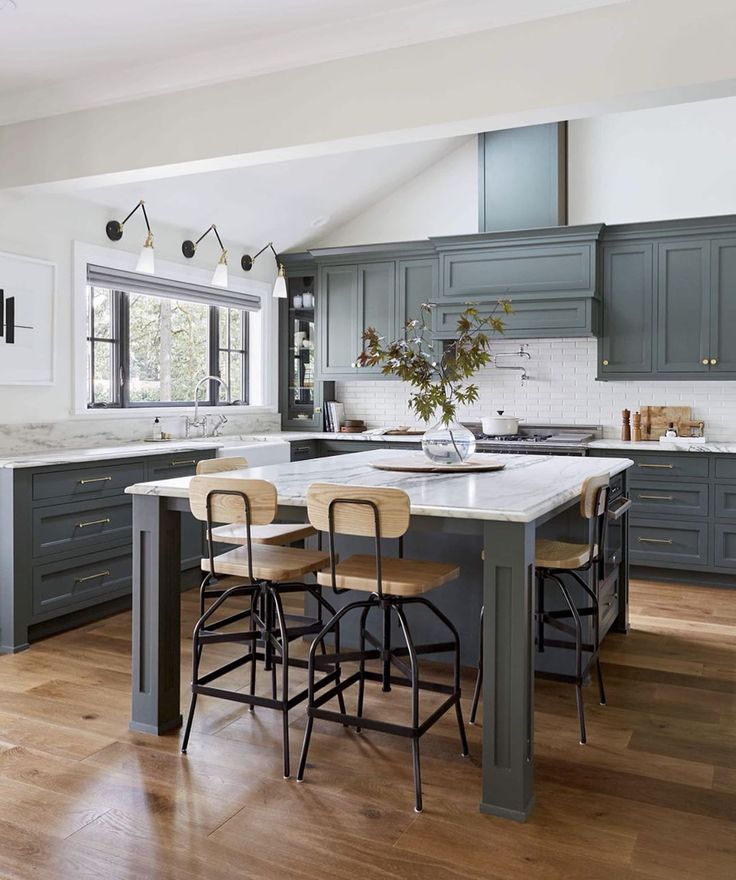 Often used antique furniture. A variety of fabric is abundantly used in the English style.
Often used antique furniture. A variety of fabric is abundantly used in the English style.
Pictured is an English style kitchen. Metal accessories harmoniously resonate with household appliances.
American style
American style is characterized by spacious rooms, kitchens are combined with living rooms. In the role of space zoning, the play of light and functional partitions are used. Light color palette.
Oriental style
Divided into two directions: Asian and Arabic. Asian style is characterized by restraint, straight lines and maximum saturation of the room with light. The Arabic style, on the contrary, is endowed with a special chic. The furniture is made of wood with carvings, an abundance of fabrics and hand-painted utensils emphasize the idea of the kitchen.
The photo shows a kitchen set with a complex carved pattern in ethnic style.
Japanese
The style is minimalistic, the space is not overloaded with unnecessary pieces of furniture.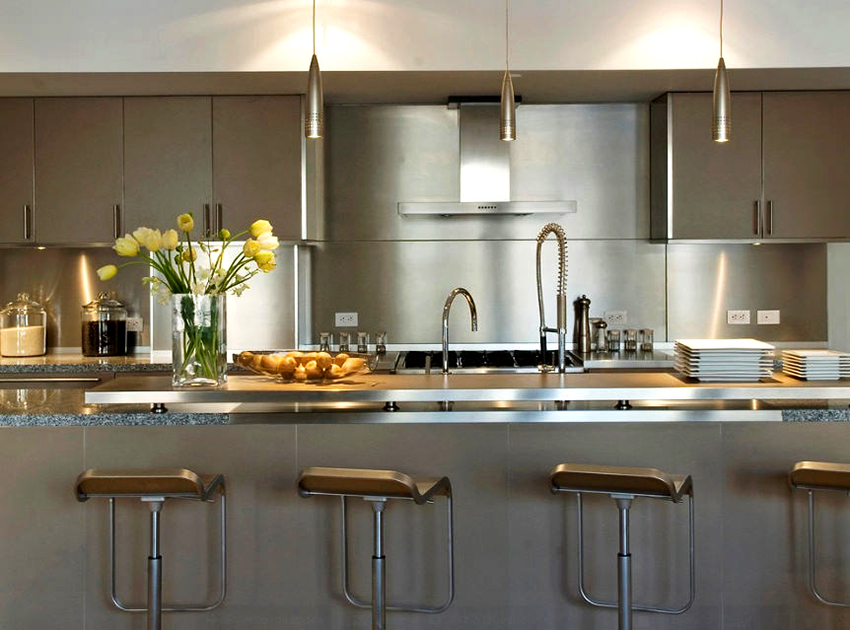 The color palette of the style reflects pastel natural shades. The kitchen will be decorated with porcelain dishes, elegant vases and a sprig of live bamboo.
The color palette of the style reflects pastel natural shades. The kitchen will be decorated with porcelain dishes, elegant vases and a sprig of live bamboo.
Chinese
The style is not distinguished by the abundant use of interior items, only the necessary furniture made of wood is required. But the colors can be used bold and bright. The room is decorated with wallpaper or wood.
Moroccan
Style combines many colors and textures. The walls of the kitchen are finished with ceramic tiles with unusual patterns. A distinctive feature of the direction can be considered patterned lattices on the windows, conveying the unique exoticism of Morocco.
Venetian
Kitchen decor can be filled with intricate patterns. To decorate the walls, plaster or wallpaper with ornate patterns is used. The furniture is decorated with complex patterns and forged handles, the furniture is upholstered with textiles.
German
The style is minimalistic and functional, all interior items bring maximum convenience.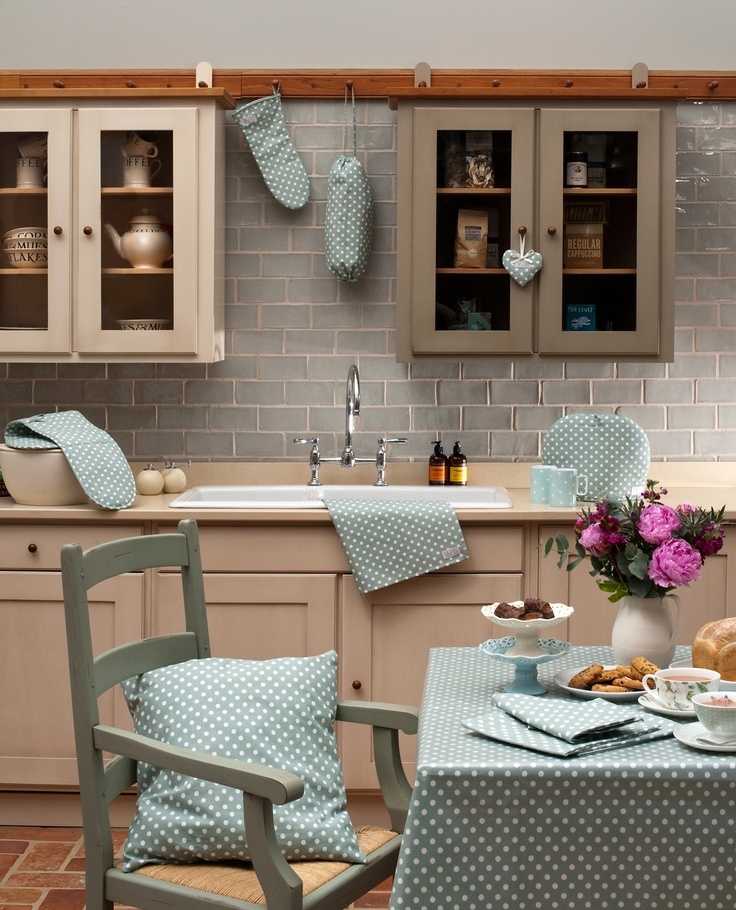 Characteristic is the use of light, warm shades, which in the decoration serve as the background of the kitchen. Furniture items have simple shapes and a strict character.
Characteristic is the use of light, warm shades, which in the decoration serve as the background of the kitchen. Furniture items have simple shapes and a strict character.
Russian
Until now, there is no clear description of the Russian style. The interior, with involved national elements, can be attributed to this direction. The main material used is wood. As wall decoration, plaster, wallpaper, whitewash, wood are used.
Other styles
Fusion
A direction that combines several styles at once. Fusion has no limits, any materials and textures can be combined in one room. There are no color restrictions, the only condition is the harmonious combination of all interior items.
Eco-style
Assumes the maximum use of natural materials. The kitchen is decorated exclusively in wood with stone elements. Textiles are selected from linen or cotton.
The photo shows a white and green eco-style kitchen. All surfaces are made of natural materials or imitated for them.
All surfaces are made of natural materials or imitated for them.
Marine style
The color palette is filled with all sorts of shades of blue and white. Decorative elements play a large role in the design, cups with themed patterns, wall paintings and striped textiles will make the kitchen spacious and stylish.
In the photo, the interior of the kitchen is decorated in the basic colors of the marine design: white and blue.
Eclectic style
Eclectic means mixing styles that are close to each other in color and interior solutions. The choice of color for decorating the kitchen depends on personal preferences. To decorate the walls of the kitchen, wallpaper or tiles with oriental motifs are used.
Contemporary
The epitome of simplicity, accessibility and convenience. The direction is characterized by a spacious room, functional furniture of simple lines. Natural materials are used for decoration.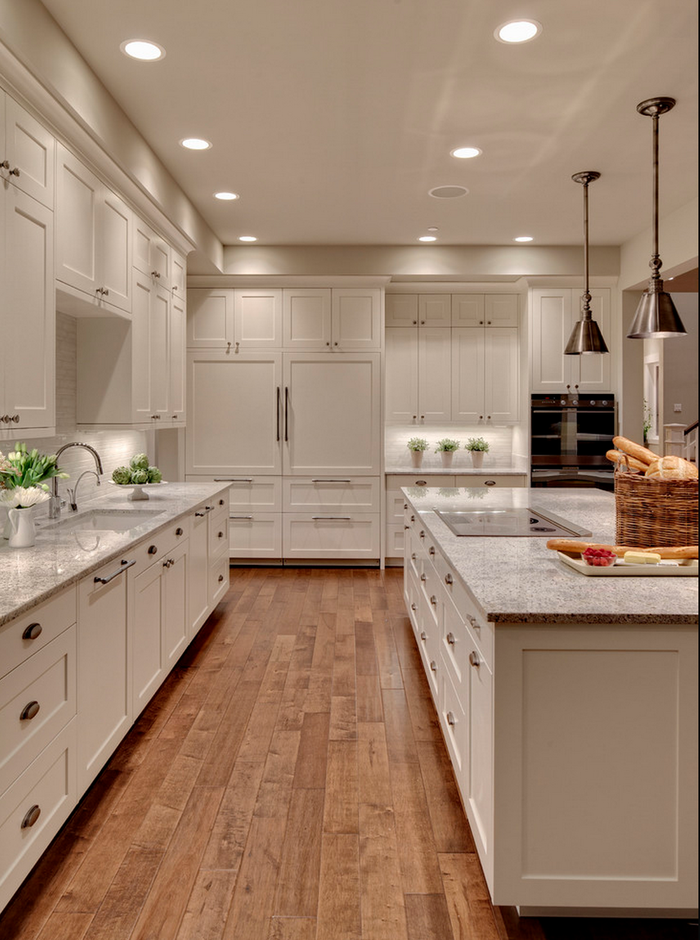
Art Deco
The Art Deco style is characterized by clear forms and shine. The main color combination is the contrast of white and black, but can be combined with a metallic and chocolate tint. The design material can be varied, for example: leather, wood, metal.
Retro and vintage style
Retro and vintage fill the interior with details of the past, the difference between them is the time they reflect. Retro is the style of the 50s, it is characterized by bright colors and an unusual shape of furniture.
Vintage originated much earlier, its interior uses calm colors and classic antique furniture.
Shabby chic
The style is characterized by the use of furniture with the effect of aging, as well as forged elements. Color scheme in pastel colors. The main material in the interior of the kitchen is wood.
Patchwork style
The "highlight" of the style is a composition of small fragments. For the interior of the kitchen, this can be a wall decorated with many tiles with different patterns.
For the interior of the kitchen, this can be a wall decorated with many tiles with different patterns.
Gzhel
The style involves the use of a beautiful blue pattern. The drawing can be applied to the wall, dishes or decorative elements.
Boho
The interior combines bright colors of the same color scheme. The walls are decorated with plaster or tiles.
Grunge
The style is similar to a loft or country. Preference is given to natural materials, the walls are often finished with brick, wood or stone. The kitchen should be spacious.
Café style
The style is full of romance, typical of cozy coffee houses. The interior of the kitchen is filled with many decorative elements, special attention is paid to the dining area.
Features of choosing a style for a small kitchen
- In an apartment with a small kitchen, it is preferable to use minimalistic directions, without complex shapes and many decorative elements.
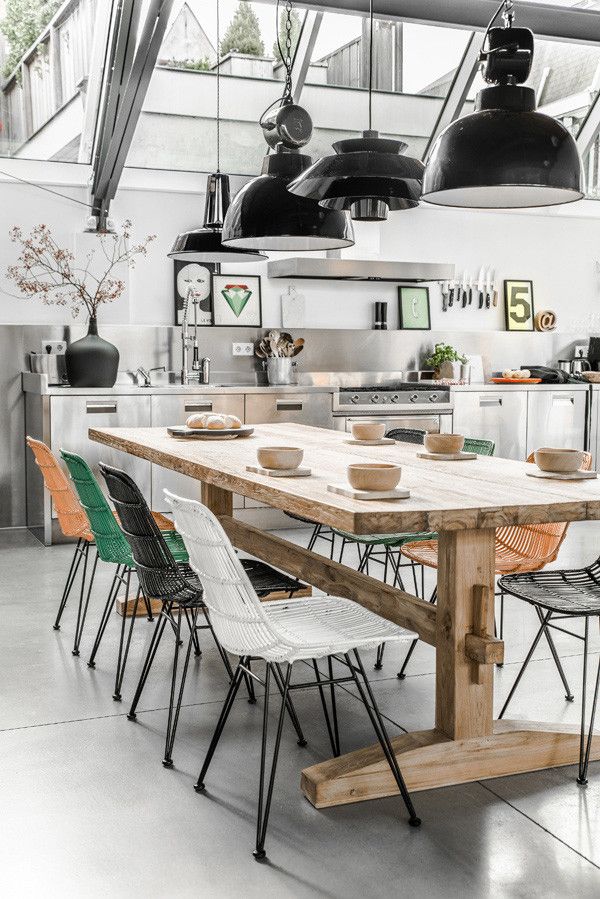
- The optimal color solution will be a light palette, due to this the area of the room will appear larger.
- Spotlights will make the ceiling higher.
Photo gallery
The choice of kitchen style depends on the overall design solution of the apartment, as well as on the mood and preferences of the residents of the apartment.
120+ photo examples, tips for choosing
The kitchen is a real mirror of the home. Every hostess wants her to be cozy, comfortable, functional and attractive. To equip such a room, first of all, you should choose the most suitable interior style for it. At the same time, it is necessary to take into account the preferences of households, the general interior of the dwelling, its size, the age of the people living in the house, their character.
Contents
Popular interior styles for decorating the kitchen
Classic interior style
Perhaps the most win-win option when it comes to creating a kitchen interior.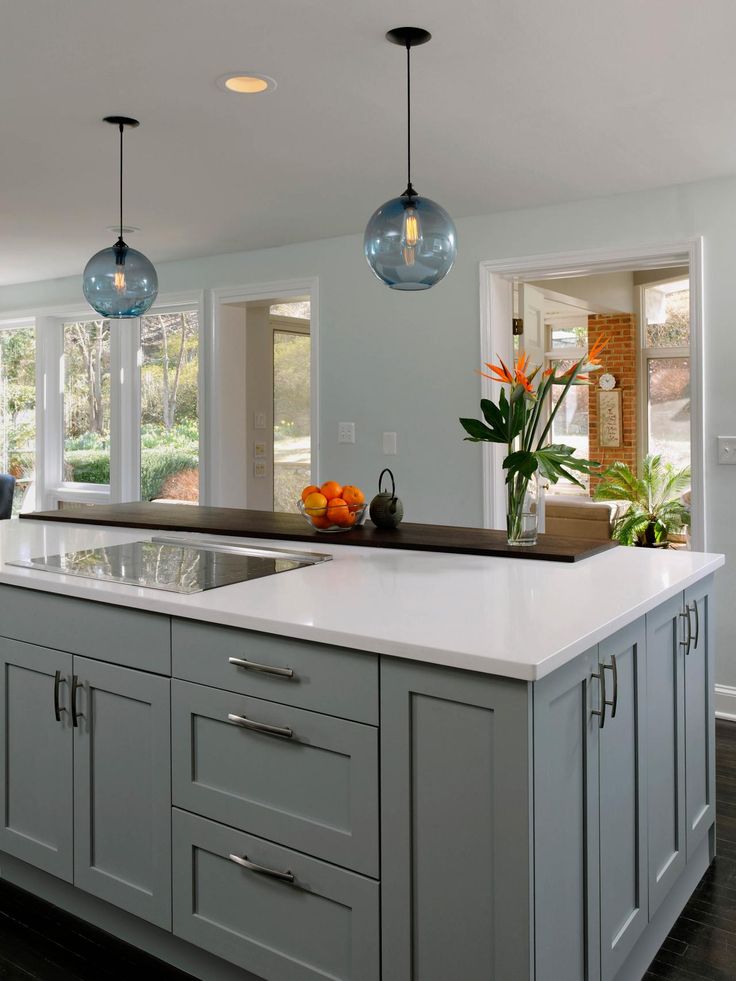 Classics always remain relevant and never go out of fashion. For such a design, a room of any size is suitable, although it is preferable that it be spacious.
Classics always remain relevant and never go out of fashion. For such a design, a room of any size is suitable, although it is preferable that it be spacious.
To get the perfect classic kitchen interior, designers advise following some of its basic principles:
- It is necessary to choose the right combination of high cost of furnishings and comfort, as well as to observe the accepted clarity of the geometric shapes of the interior.
- Do not experiment with the color palette - the ceilings should be white, if desired, they can be decorated with a decorative rosette in the center, or stucco cornices.
- For wall decoration, choose materials (or paint) in light beige shades. It is desirable that the walls are plain.
- It is not necessary to install a parquet or wooden floor in a classic kitchen, as it will be impractical and expensive. You can use high-quality tiles or porcelain tiles. At the same time, the color scheme of the floor should correspond to the general style of the room.
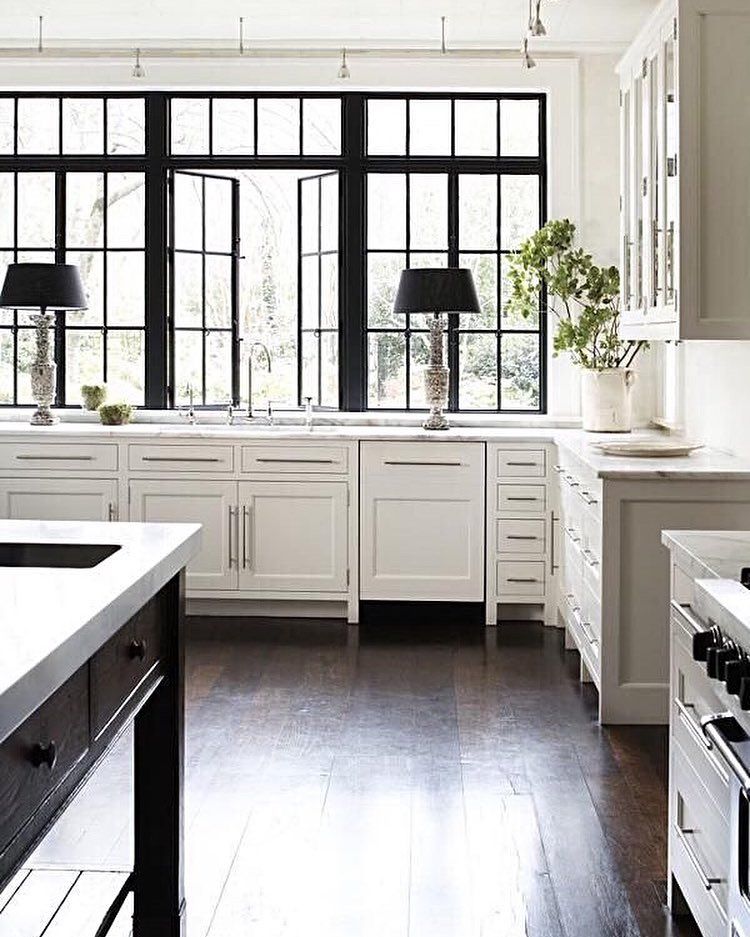
- To create a truly classic interior in the kitchen, install solid wood furniture in dark shades. It should not be pretentious, simple forms are welcome. The high cost of such furniture is offset by its excellent quality and long service life.
- Doors and windows can be arched or rectangular. It is recommended to make them from natural wood.
- Place a luxurious chandelier with lamps stylized as candles and forged elements in the center of the ceiling.
- You can decorate the walls with several reproductions of still life paintings by famous artists.
As for gilding and other attributes of luxury, they should be abandoned in favor of coziness and comfort.
Provence style interior
The Provence style kitchen is distinguished by its particular elegance, while being extremely simple. The most recognizable and characteristic features of this style can be called walls with a rough finish, old furniture in light colors, floral patterns, light textiles.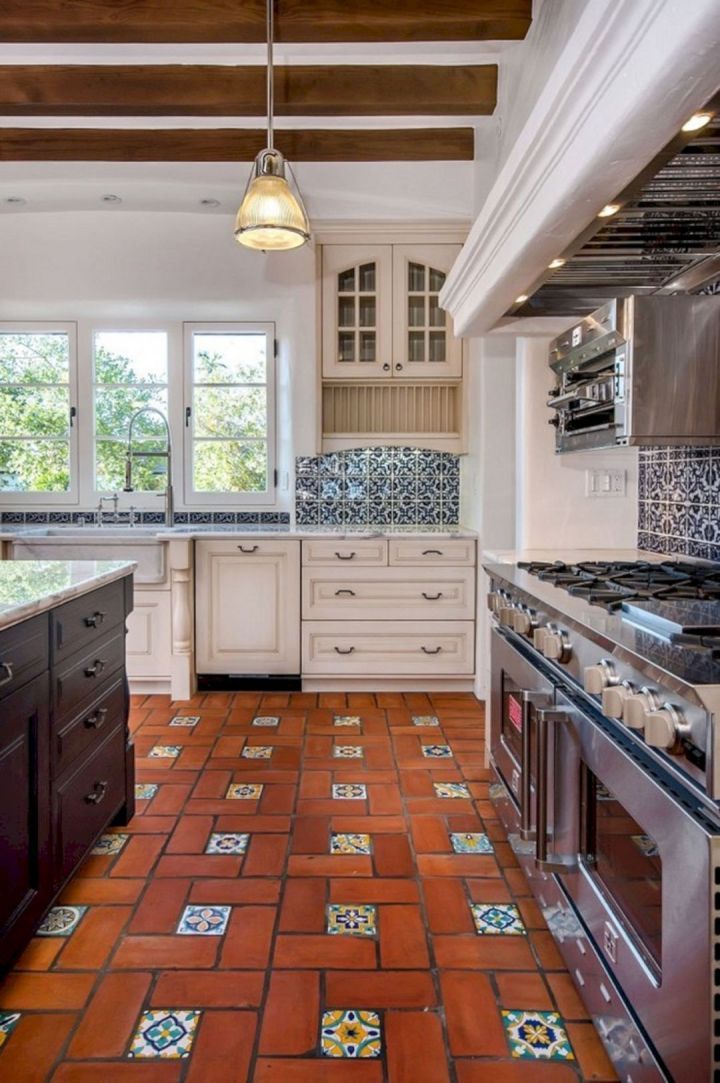
Provence style kitchen always looks very cozy and warm. It seems to be filled with light and transfers the inhabitants of the dwelling to the atmosphere of the southern French province.
The basic rules that should be followed when arranging a Provence style kitchen: you should stop using dark shades, which in this case look completely out of place.
The wall covering needs to look a little rough. The ideal option is to simply apply plaster, and then whitewash the walls. In the same way, you can finish the ceiling.
Rough wooden planks or tiles are recommended for flooring. Provence style furniture can be made exclusively from natural wood. The best color for her is light.
A huge role in creating such an interior is played by numerous decorative details: wicker baskets, clay pots, ceramic figurines, bags of spices, vases with lavender bouquets and much more. Textiles on the windows are no less important - it should be light and bright.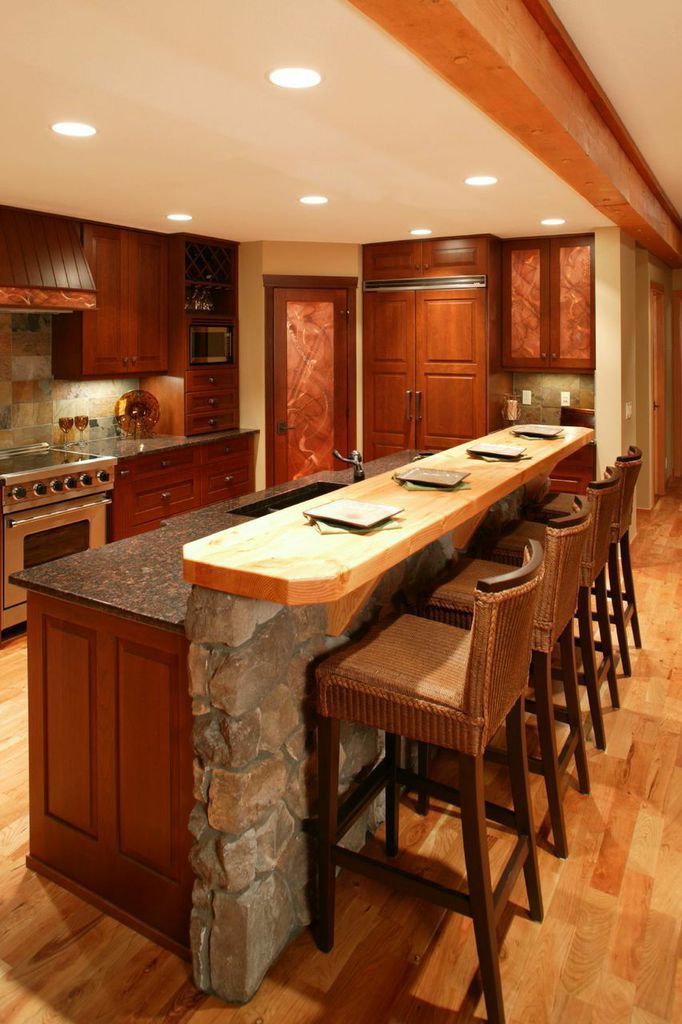
Hi-tech kitchen interior
This style is characterized by the use of high technology. The interior of such a kitchen consists of clear strict lines, geometric shapes, complex structures. Contrasting colors are encouraged.
The room should have the necessary minimum of furniture, the kitchen should not look cluttered. High-tech interiors are dominated by artificial and high-tech materials: plastic, metal, glass, concrete. They can be combined with each other, creating a cold and strict kitchen design.
One of the advantages of such a room is the ease of maintenance. A high-tech kitchen is perfect for modern business people who value time, love comfort, and do not spend much time cooking.
Modern style
This style originated at the end of the 19th century, and the 20th century (its beginning) became its heyday. In those days, it was a bizarre combination of mass-produced items and works of art. Now modern looks completely different.
The main concepts of this style: it has smooth, curved lines, there is asymmetry. Be sure to have shiny smooth surfaces. The interior itself looks quite strict, there should not be many pieces of furniture in the room.
As for the color scheme, light contrast and soft tones should be preferred. Thanks to the restraint of shades and color minimalism, you can visually enlarge the room.
It is very important to properly organize the lighting of such a kitchen: it should be subdued, soft and even. The chandelier should be chosen strict, with clear lines. You should refrain from the abundance of accessories in such an interior.
All pieces of furniture should look simple and stylish, while being functional and comfortable. You can also refuse to use textiles.
Minimalist style kitchen
Like the high-tech style, this interior is characterized by the presence of a minimum of furniture - hence its name. All items present in the kitchen should be strict and concise, and most importantly, there should be few of them.
All items present in the kitchen should be strict and concise, and most importantly, there should be few of them.
No more than three different shades can be present in the interior at the same time - dim, muted, basic. In this case, small inclusions of bright colors are allowed.
It is very important to organize the right lighting in a minimalist kitchen, both natural and artificial. There should be a lot of light, there is no place for shaded areas in such a room. The kitchen space itself should be organized in such a way that it leaves a lot of free space.
The minimalist style is perfect for small kitchens. It can be chosen if the layout of the room is narrow. When finishing, natural and synthetic materials should be used. The ceiling is better to make light. It is necessary that matte surfaces prevail in the kitchen.
It is also necessary to choose multifunctional and simple furniture with built-in household appliances.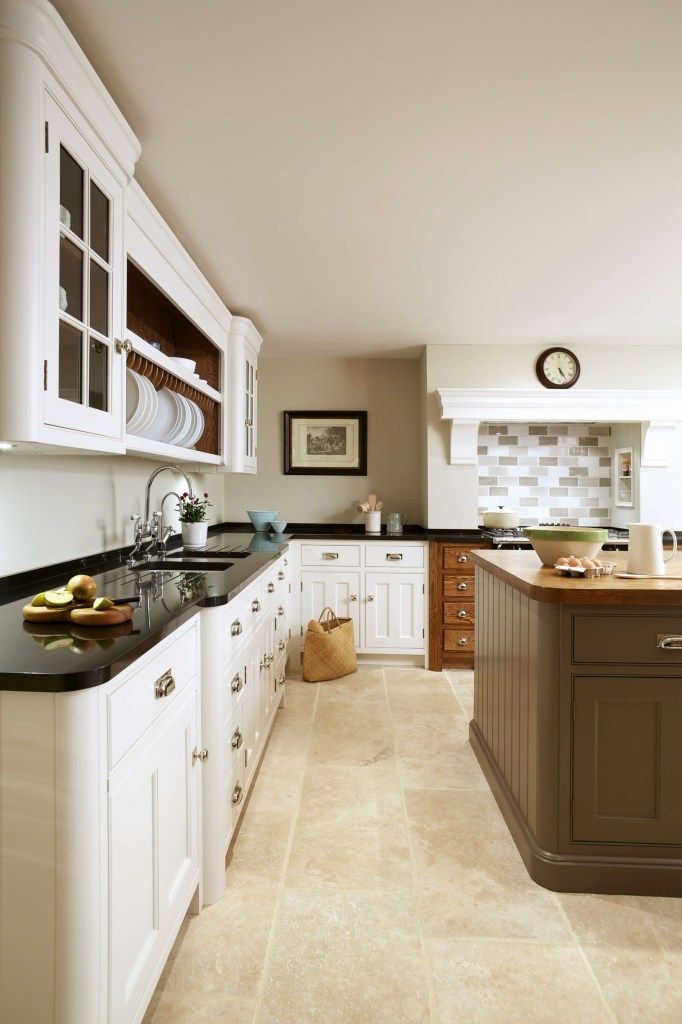 Unusual decor items will help to revive the kitchen a little: an original chandelier, an unusual vase in the corner, a unique fruit stand.
Unusual decor items will help to revive the kitchen a little: an original chandelier, an unusual vase in the corner, a unique fruit stand.
Loft
A loft-style kitchen is the ideal solution for people who live dynamically and keep up with the times. The urban aesthetic of the concrete jungle, which is replete with concrete, glass and metal, fits perfectly into spacious city apartments. When creating such a style, it is necessary to discard the conventions in order to realize the most outrageous ideas.
When choosing furniture for such a kitchen, it is recommended to give preference to shiny and matt facades of laconic forms. As for the color scheme, the use of light gray and white tones, as well as metallic colors, is welcome. Rough wooden facades are perfect.
Forged items, bronze, leather and copper fittings are perfectly combined with a loft-style set. Light metal furniture made in the form of shelves and pencil cases will look harmonious.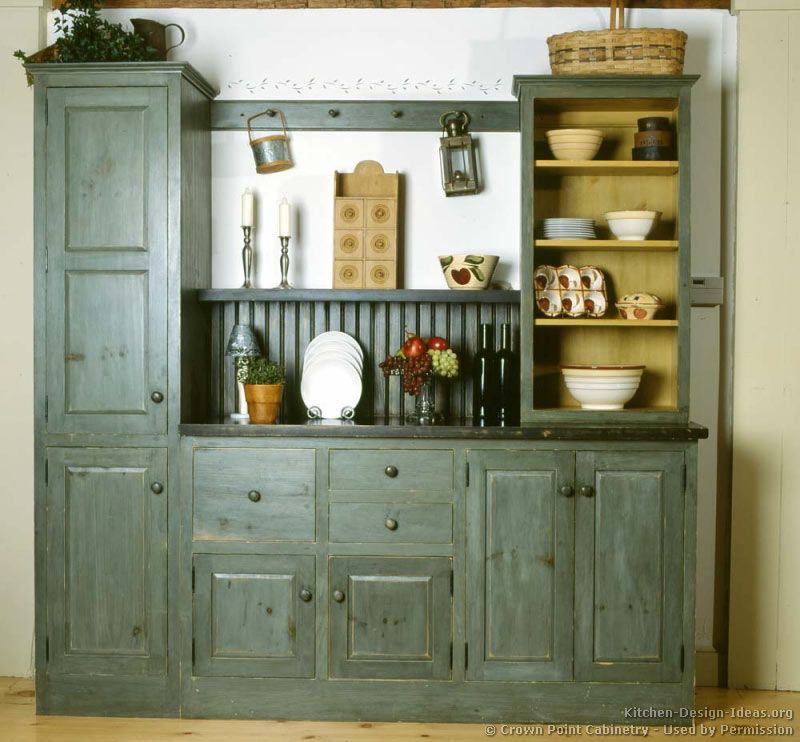 A new, sparkling chrome set, as well as old wooden furniture, will suit the loft-style kitchen.
A new, sparkling chrome set, as well as old wooden furniture, will suit the loft-style kitchen.
The color scheme of the kitchen is determined by cold shades - white, gray, brick, terracotta, beige. The ceiling should be made white, or concrete gray slabs should be left unfinished. You can decorate such a ceiling with rough wooden beams.
When it comes to decorating walls, you need to be imaginative. A brick wall in such an interior will look very stylish. You can not use textiles to decorate windows, however, long dark and heavy curtains can decorate a large panoramic window of a loft-style kitchen well.
Japanese style
To create a Japanese-style kitchen interior, you need to free the room from old things and unnecessary rubbish. The design philosophy of the Land of the Rising Sun is naturalness and simplicity. The kitchen should be cleaned of decorative excesses, leaving the necessary minimum of furniture.
Particular attention is paid to the decoration of the walls of the room.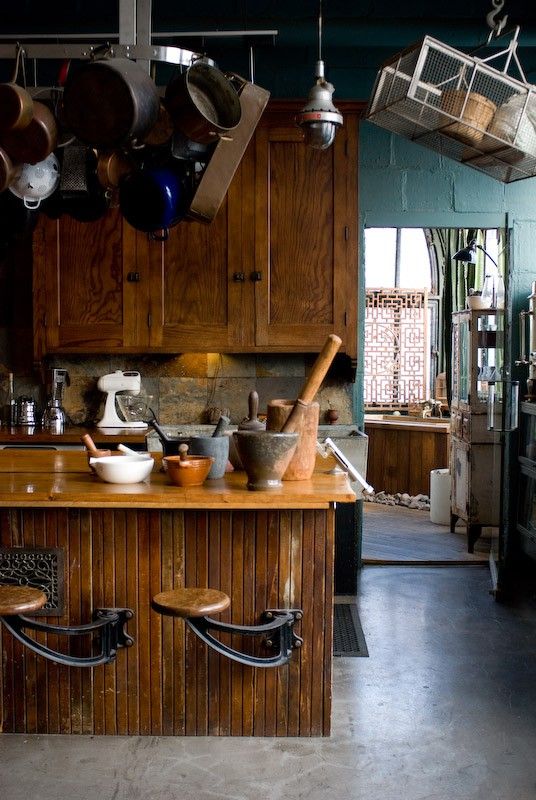 You can simply paint them by choosing muted calm tones - beige, olive, light brown, white. Washable wallpapers are also suitable, but in the same muted colors. The Japanese appreciate conciseness and love simplicity, so you should not clutter up your kitchen space with unnecessary items.
You can simply paint them by choosing muted calm tones - beige, olive, light brown, white. Washable wallpapers are also suitable, but in the same muted colors. The Japanese appreciate conciseness and love simplicity, so you should not clutter up your kitchen space with unnecessary items.
Against the background of a light shade of the ceiling and walls, a dark floor, made in the colors of black ash or dark walnut, will look good. It is best to use wood or laminate as a finishing material (tiles do not match the Japanese style at all).
All household appliances in a Japanese-style kitchen should be built-in - the less they are visible in the interior, the better. For windows, you should choose bamboo blinds.
Colonial style kitchen interior
Colonial style combines classic style with some exotic elements. Particular attention should be paid to the choice of furniture, since it depends on it how original the atmosphere of the kitchen will be.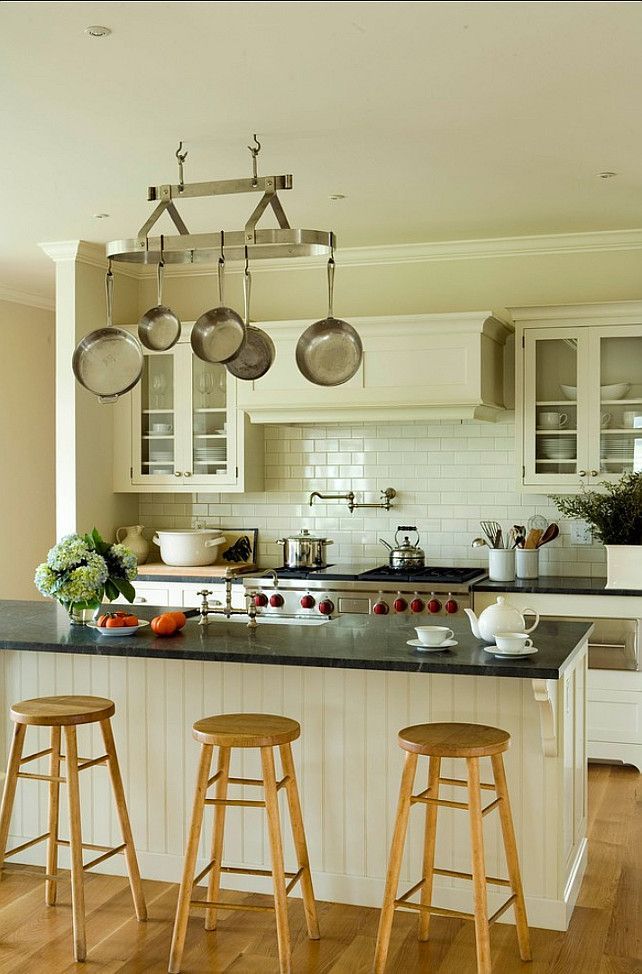
As for the wall and ceiling decoration, it will serve as an unobtrusive background for the created interior. It is recommended to pick up a wooden set with carved facades, a large round dining table and Viennese chairs for it. The ceiling should be decorated with dark beams.
Light translucent curtains should be selected for windows. As decorative elements, you can use oriental-style copper utensils, unusual ceramics, bronze figurines, and a Chinese vase.
How to choose the right style for your kitchen
The smaller the kitchen, the more modern it needs to be. For small spaces, minimalism, hi-tech and modern styles are great, which involve minimal use of furniture, as well as the installation of built-in household appliances, which significantly saves space.
Pompous and glamorous styles that involve the use of numerous decorative elements (classic, Mediterranean, shabby chic, colonial) are best created in spacious kitchens.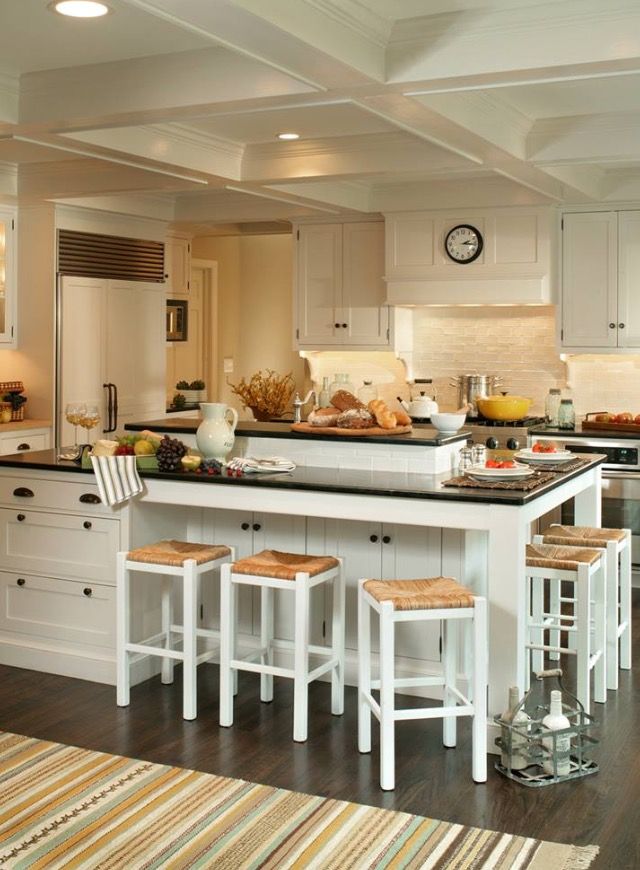
How to choose the style of the kitchen depending on the age of its owners
Young people who live without children often prefer strict, concise and seasoned styles, without the presence of excessive decor in them. Such interiors are fully consistent with the spirit of the times, they do not take time and allow you to live without slowing down.
As for more mature couples, they often prefer classic styles - with comfortable furniture made from natural materials, soft lighting, cute trinkets, beautiful dishes in the sideboard.
Choosing the style of the kitchen interior, it is important not to make a mistake - people spend quite a lot of time in this room, and therefore it should be as comfortable as possible.
Kitchen style depending on the nature of the household
High-tech and minimalist styles are ideal for dynamic, bold and decisive people.
Calm and balanced people with traditional views on life will give preference to a classic interior.

